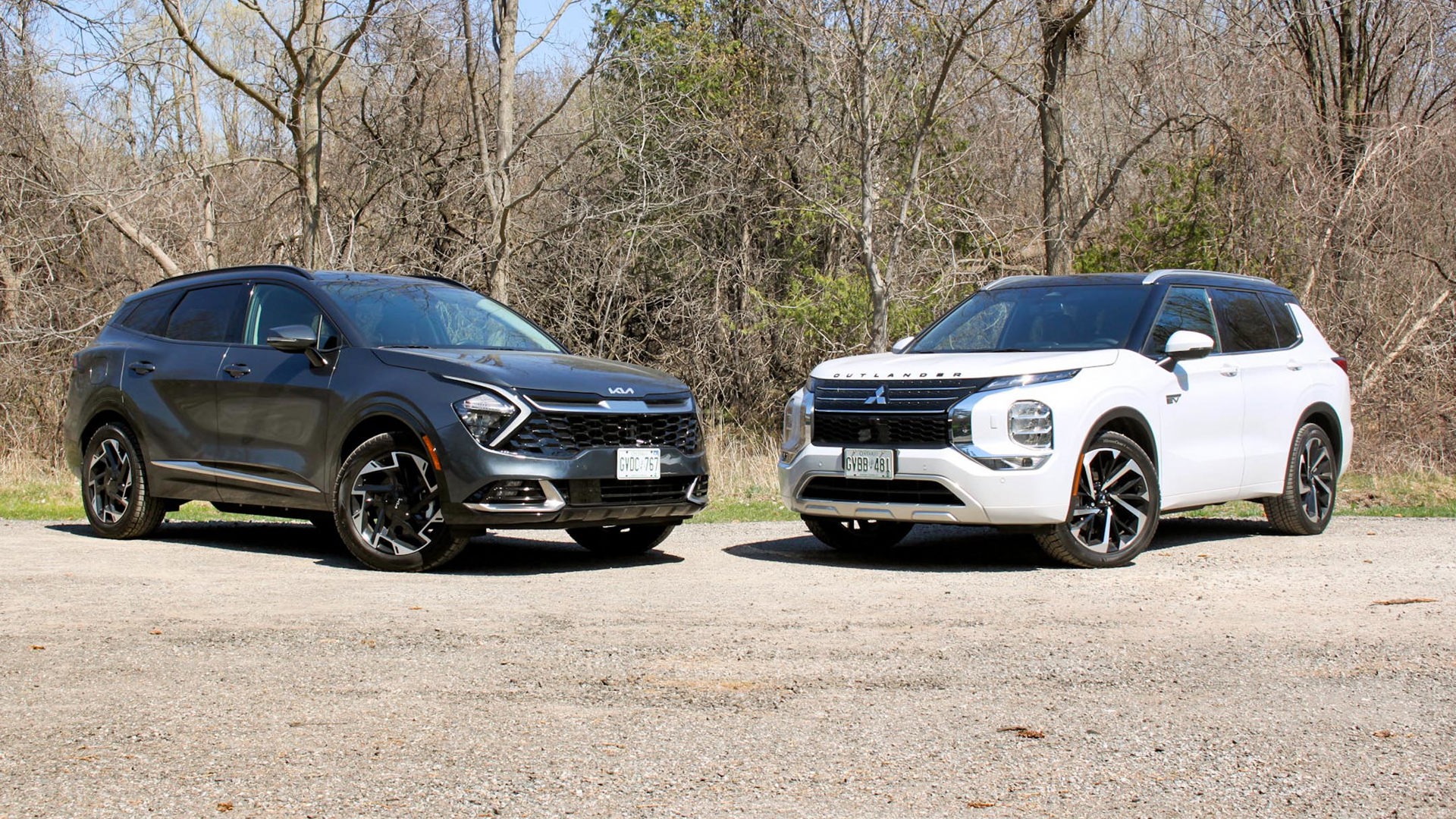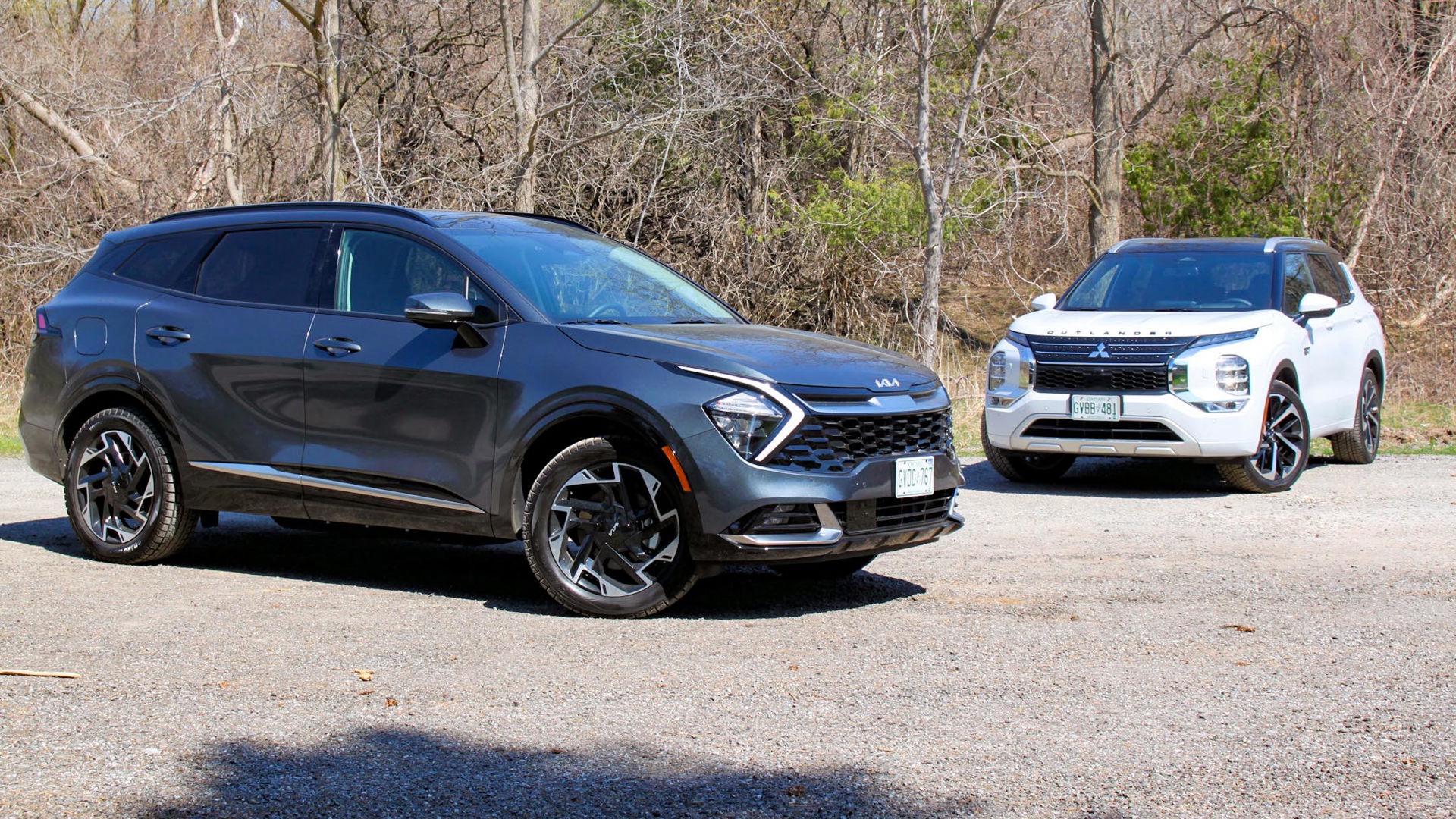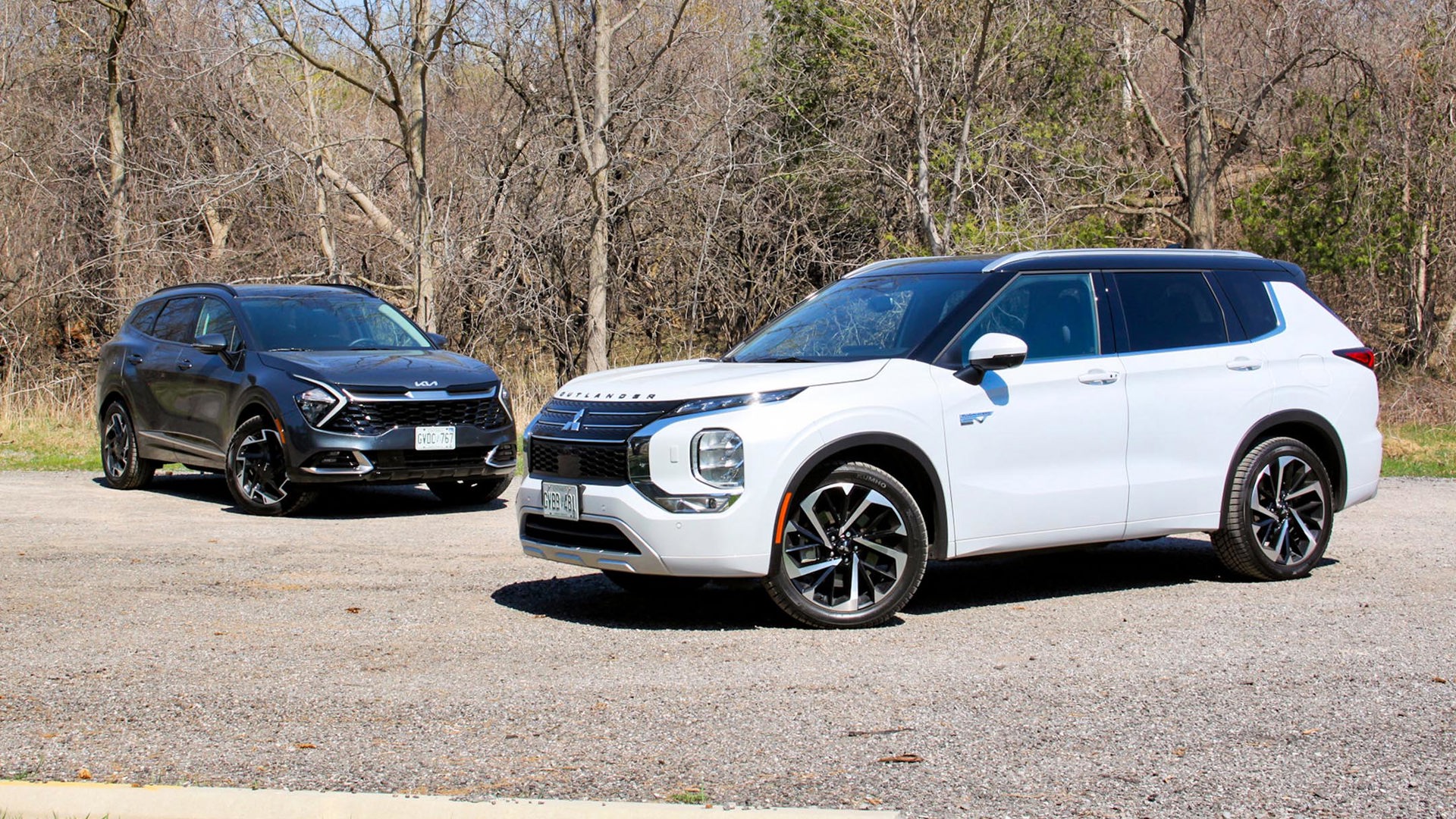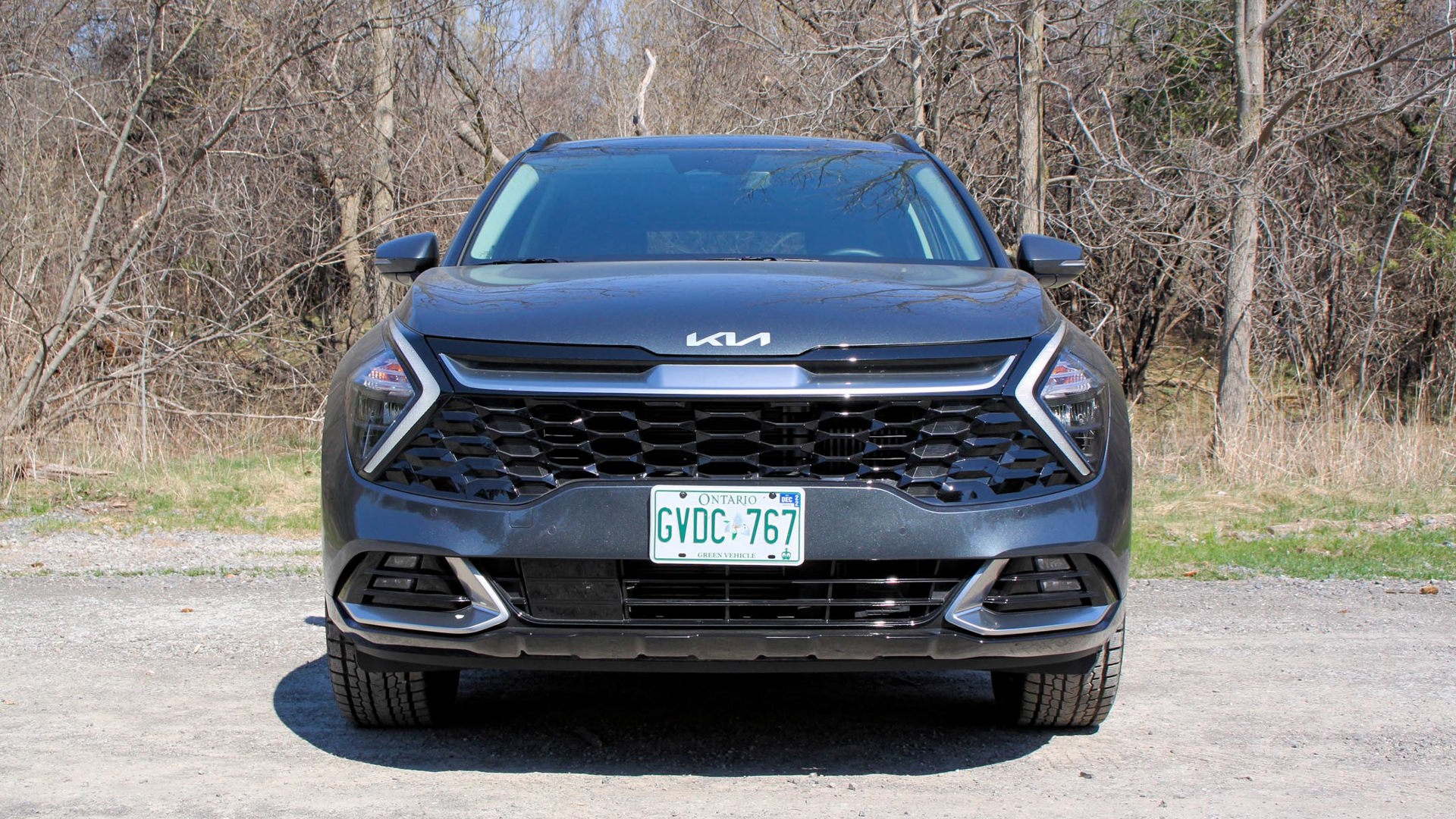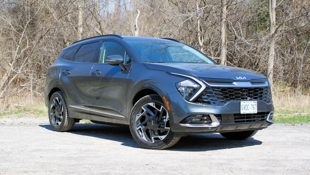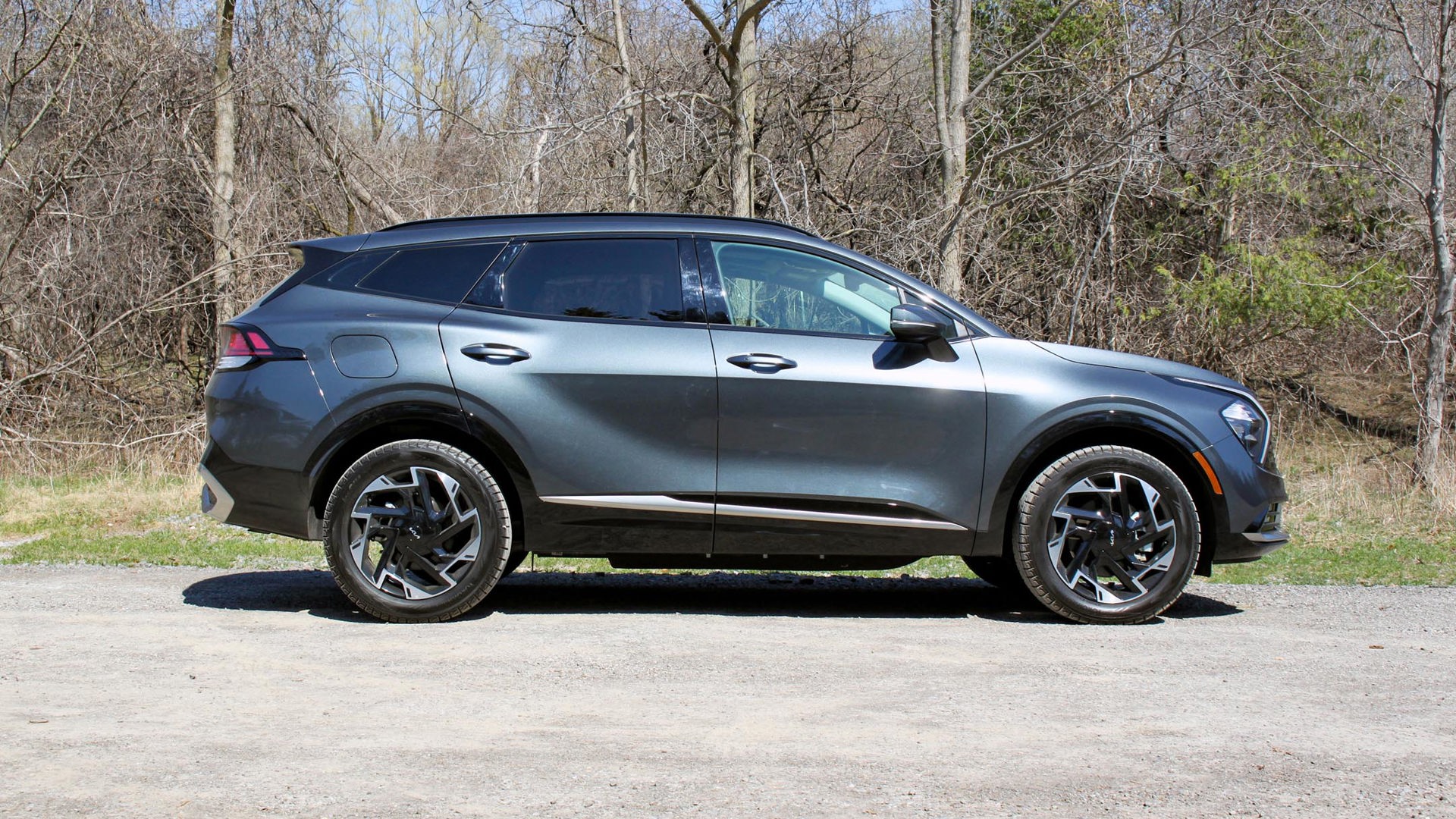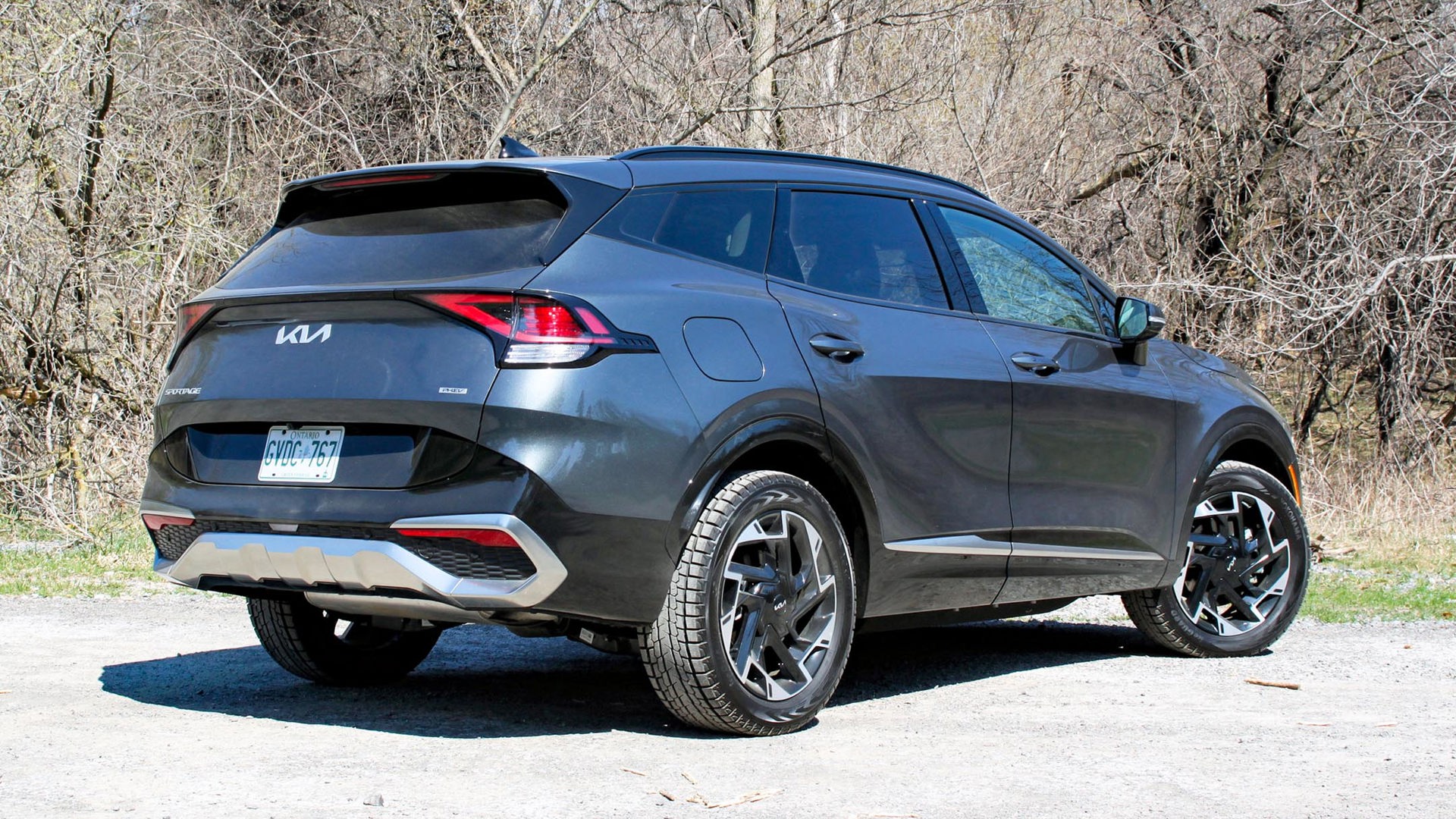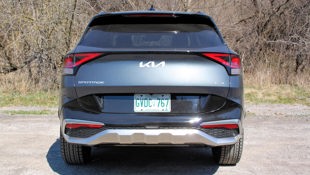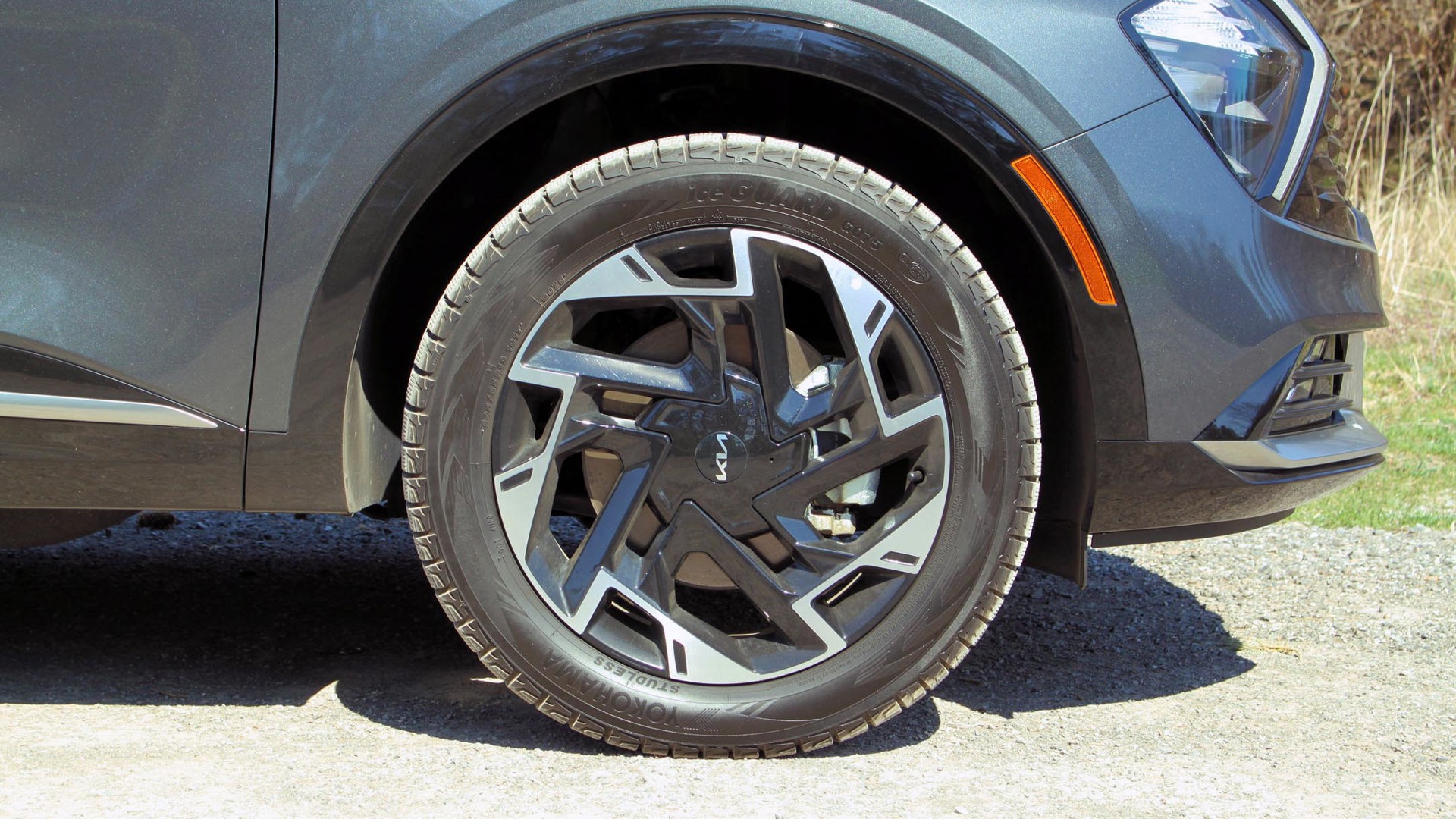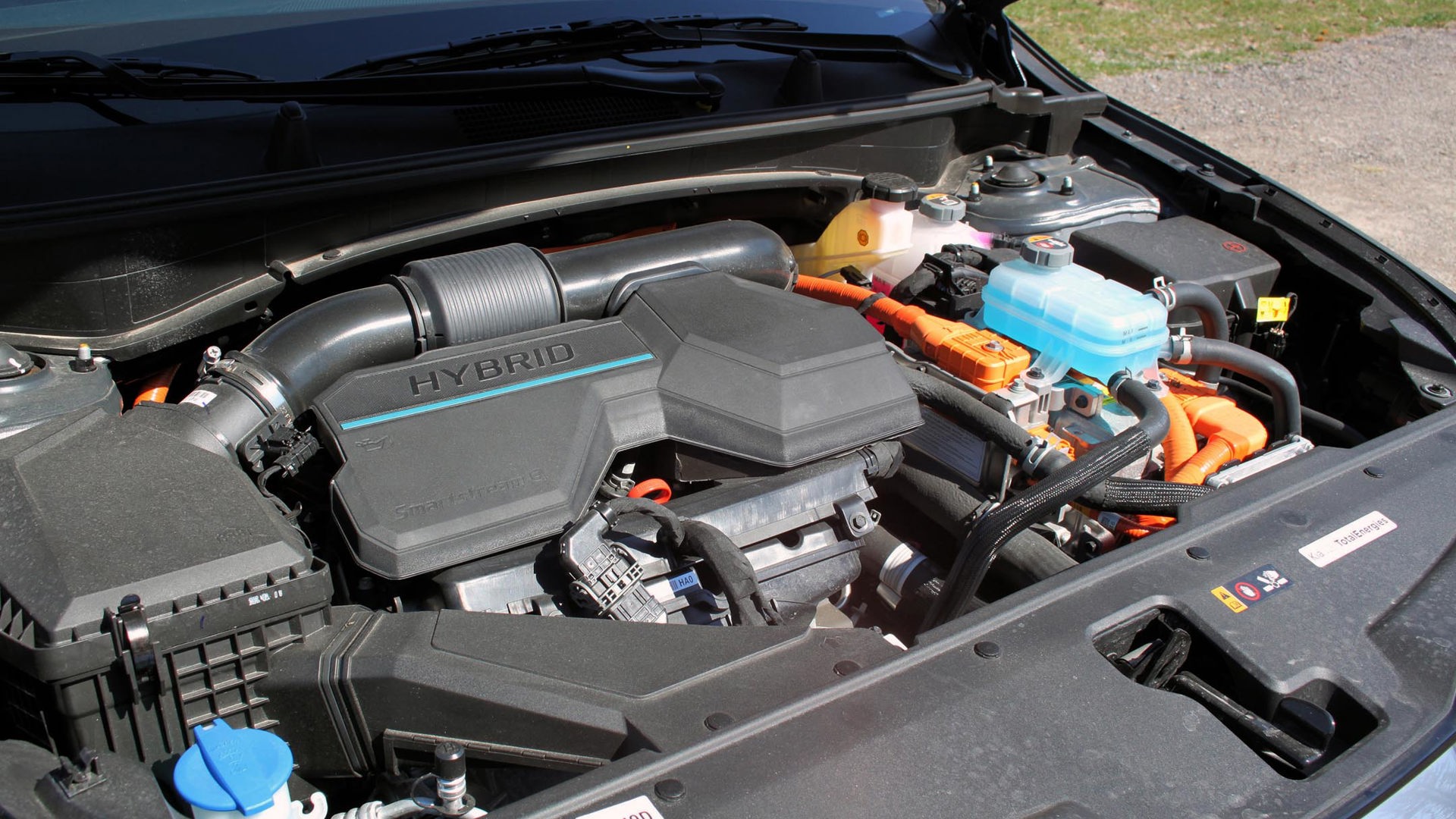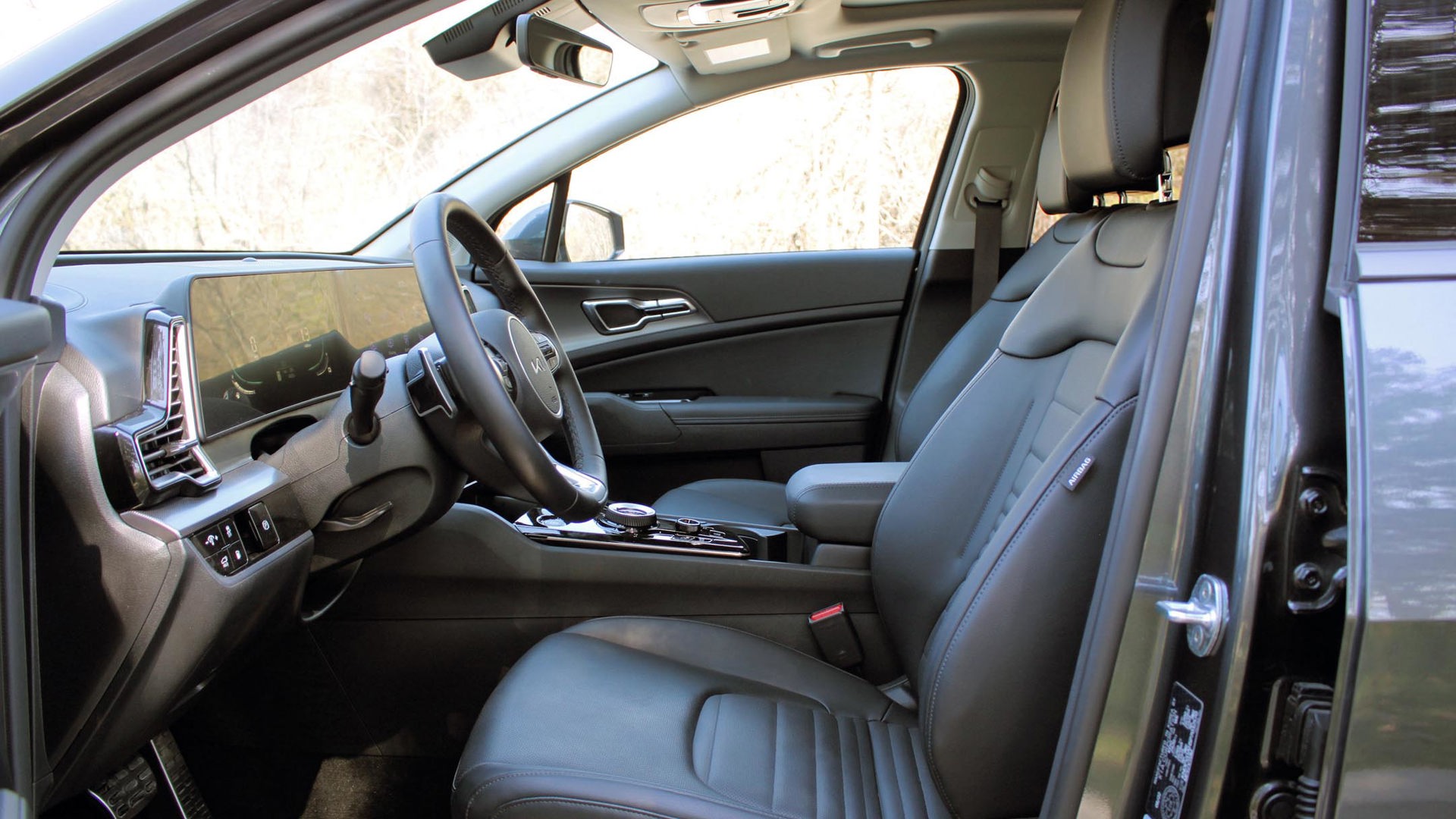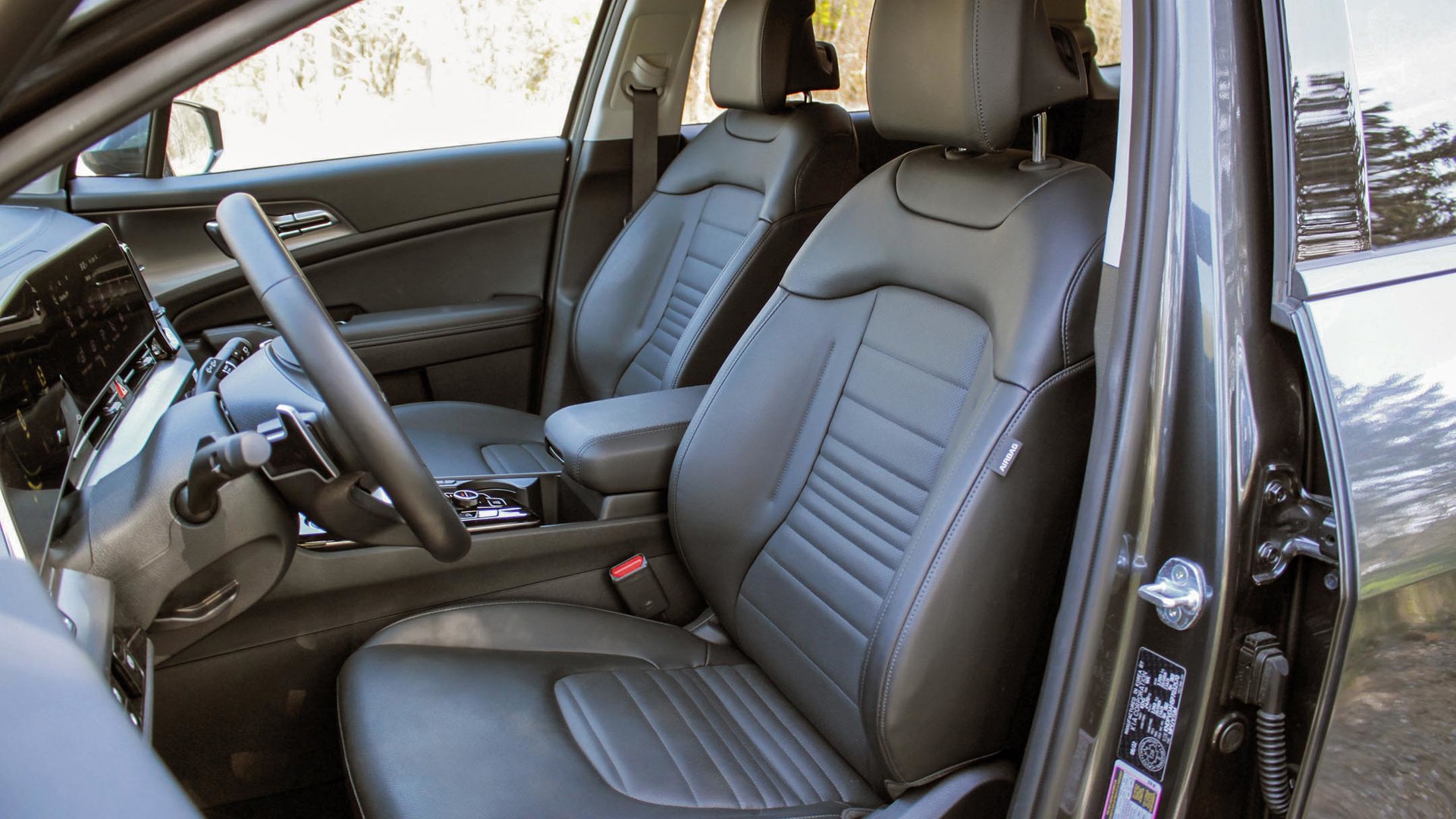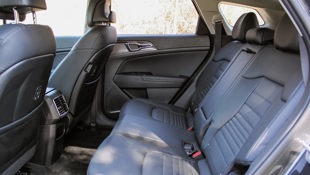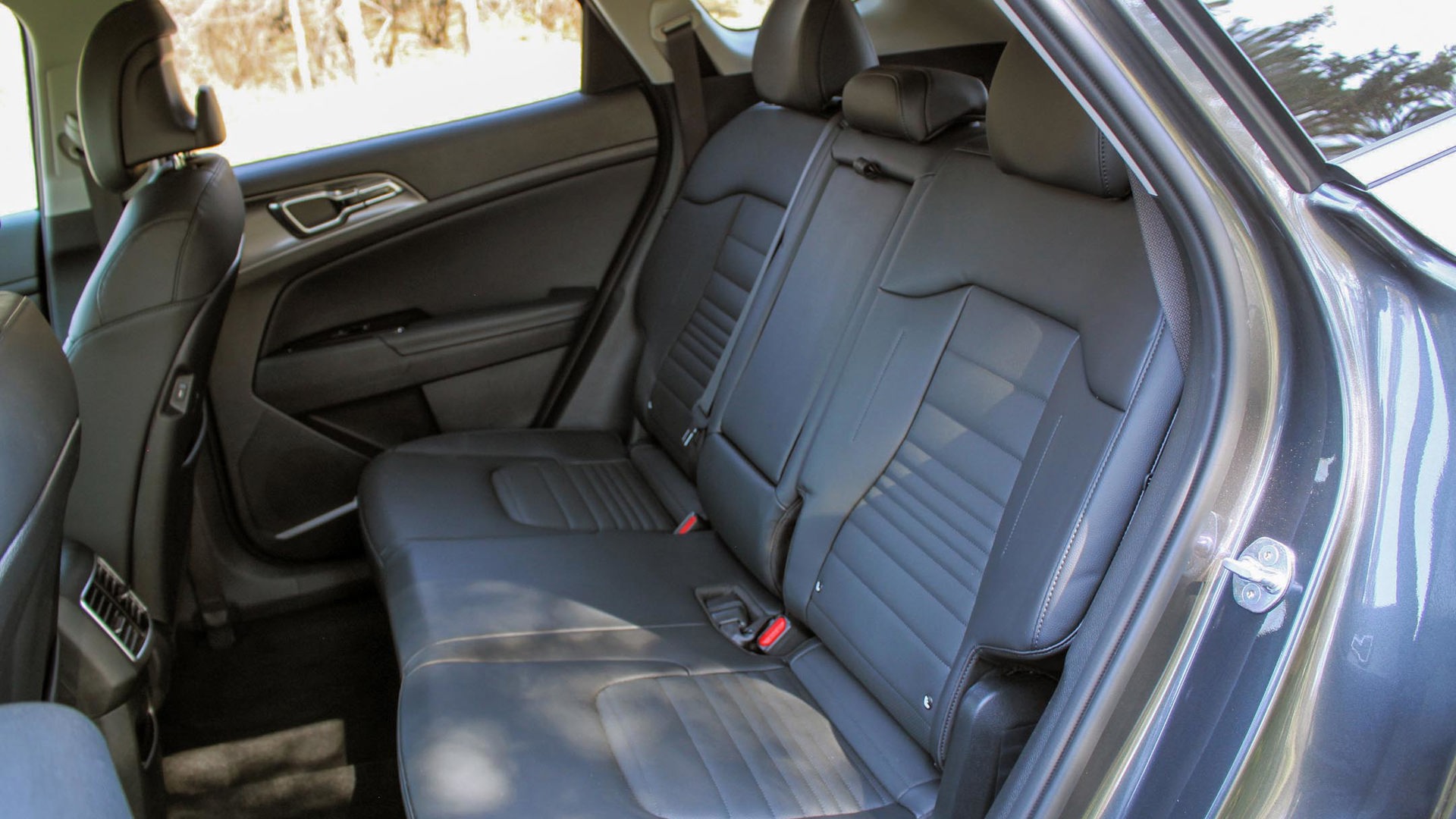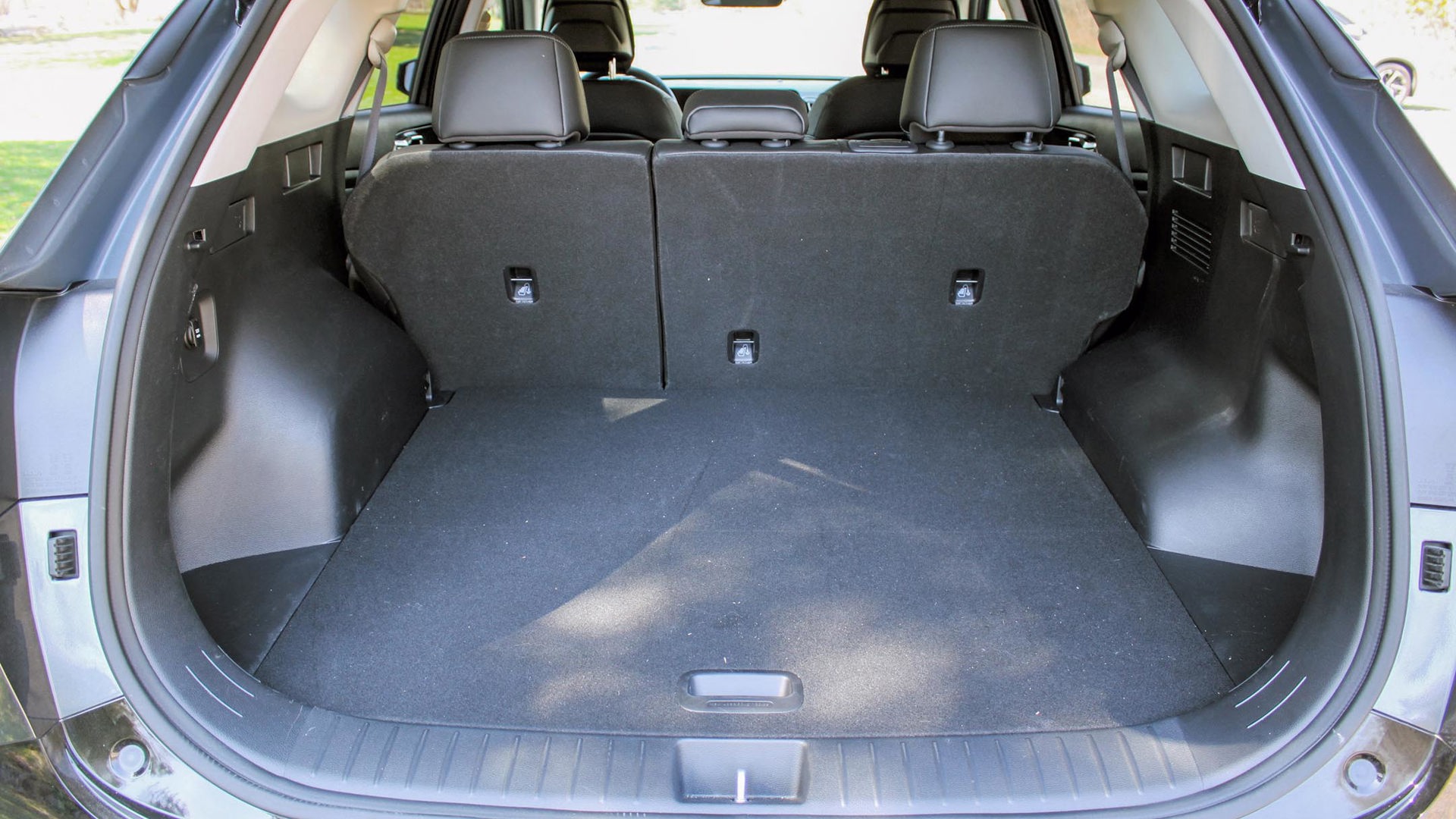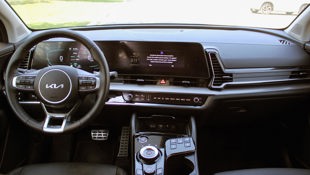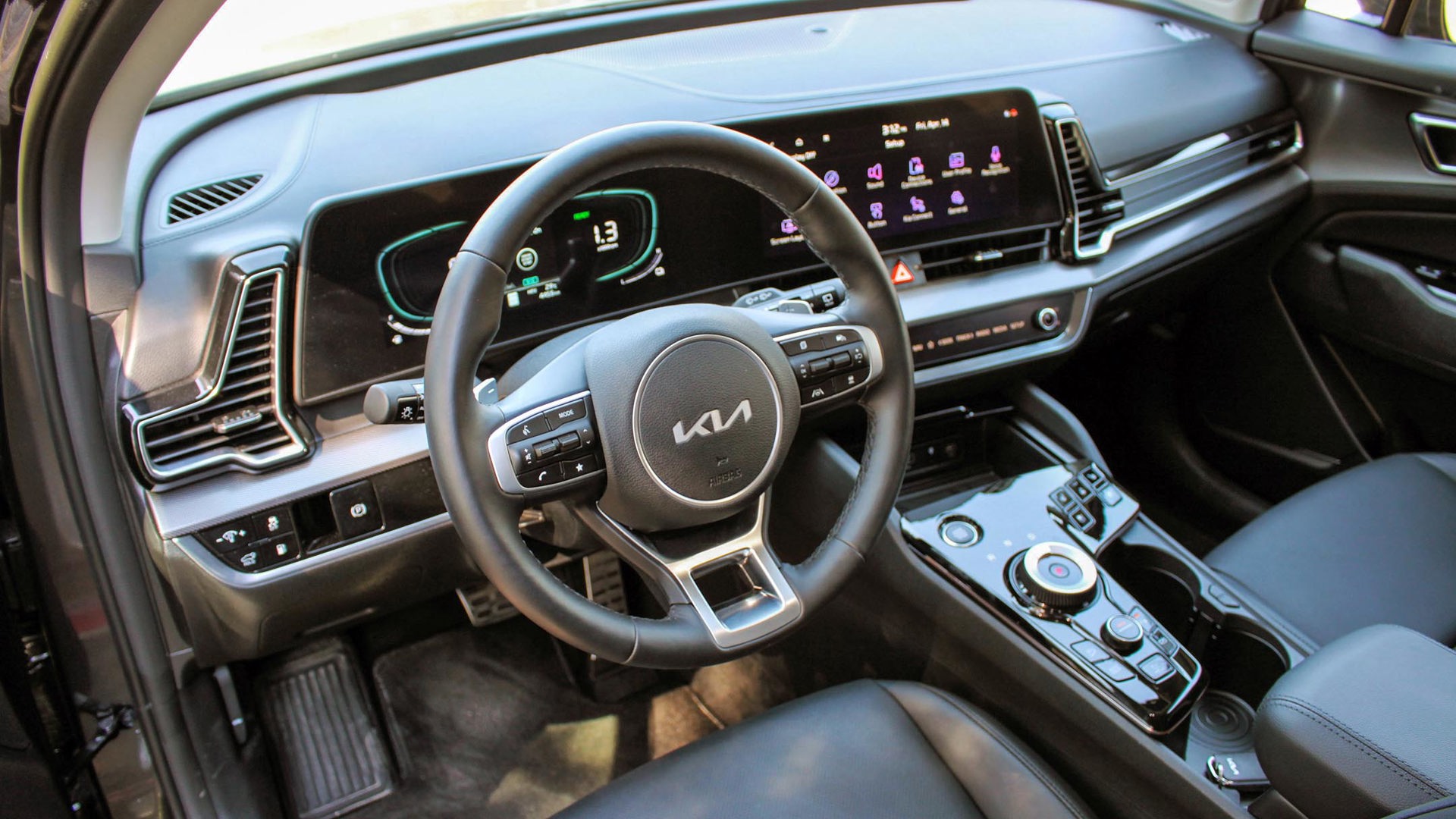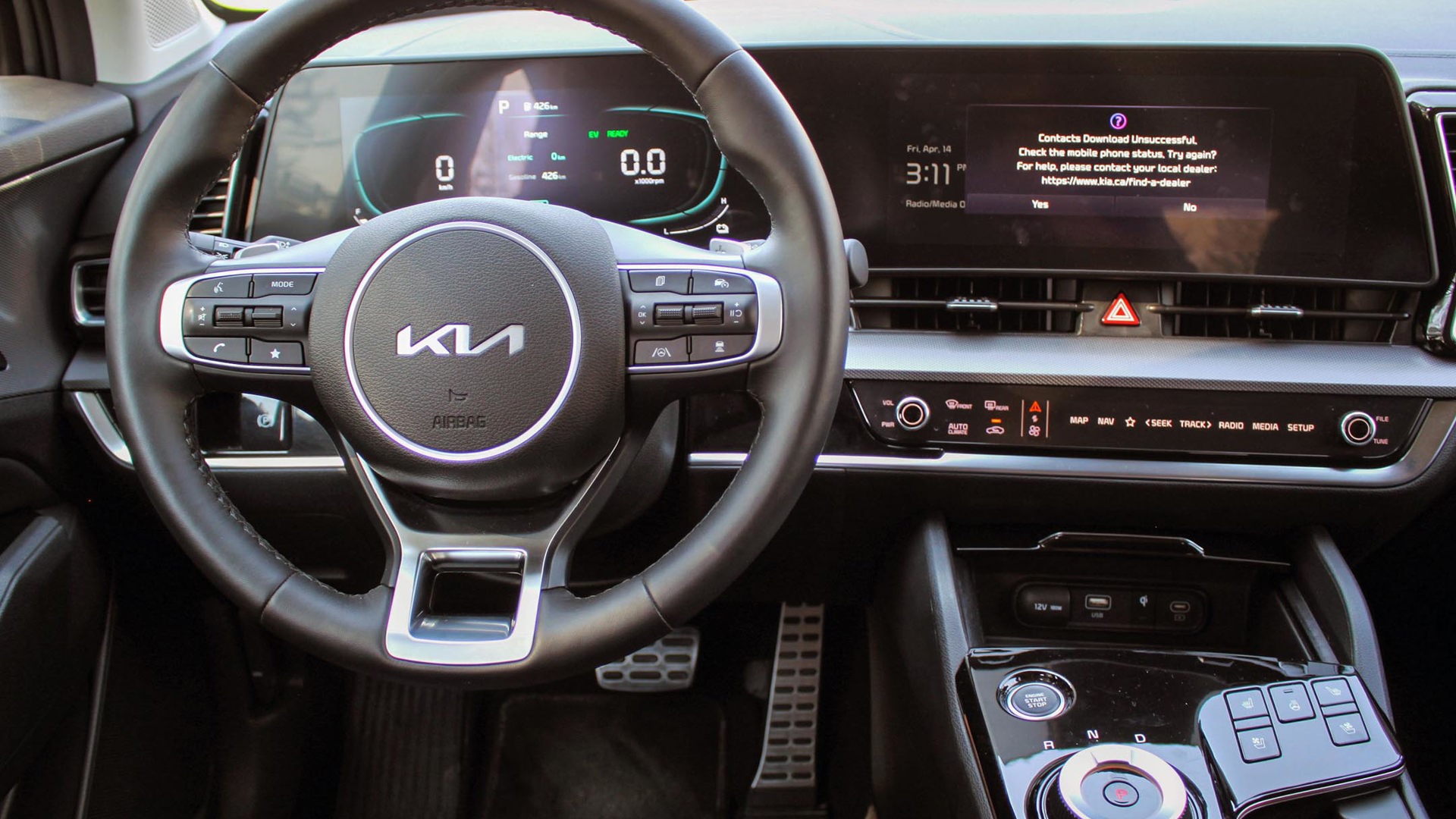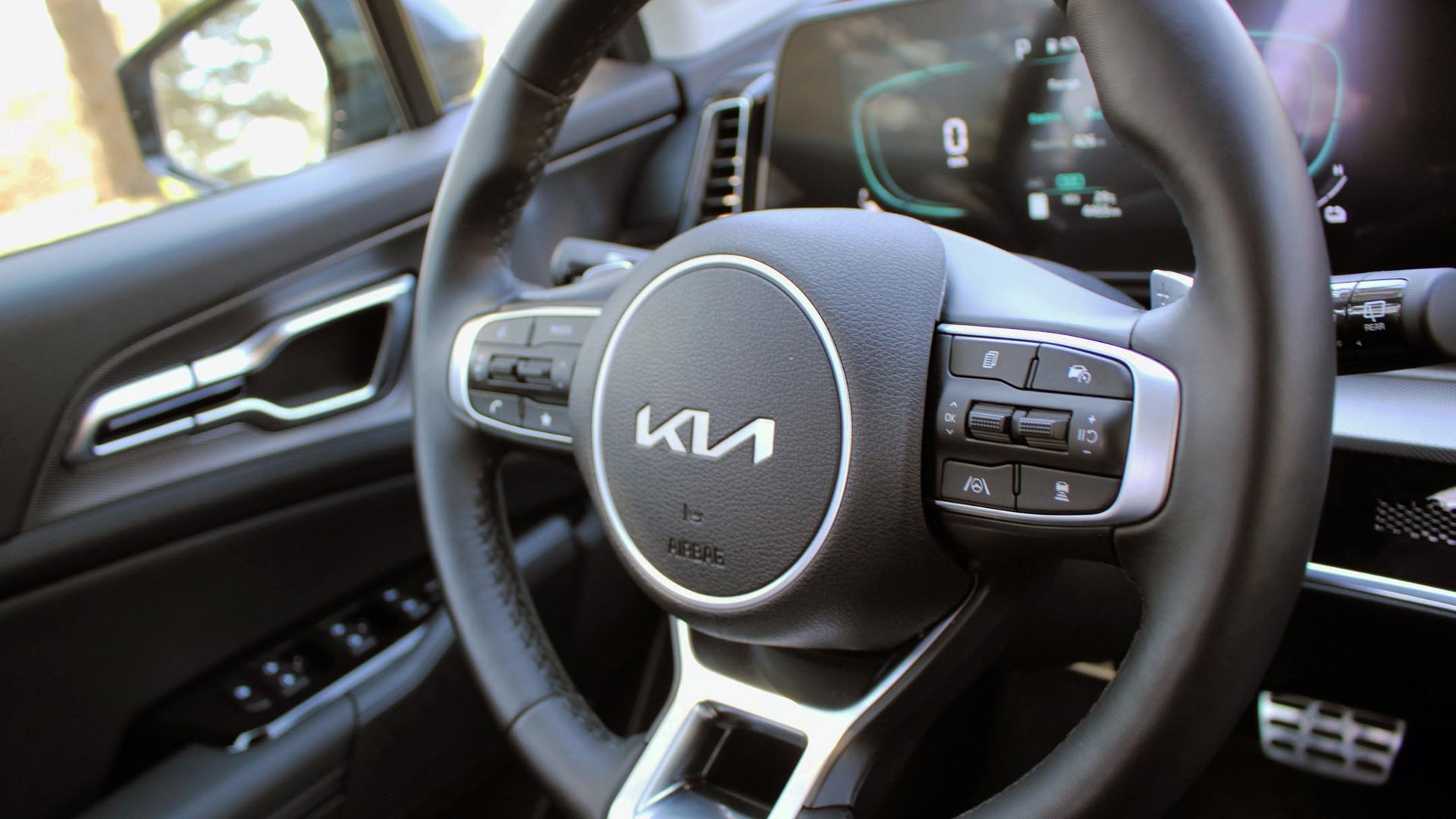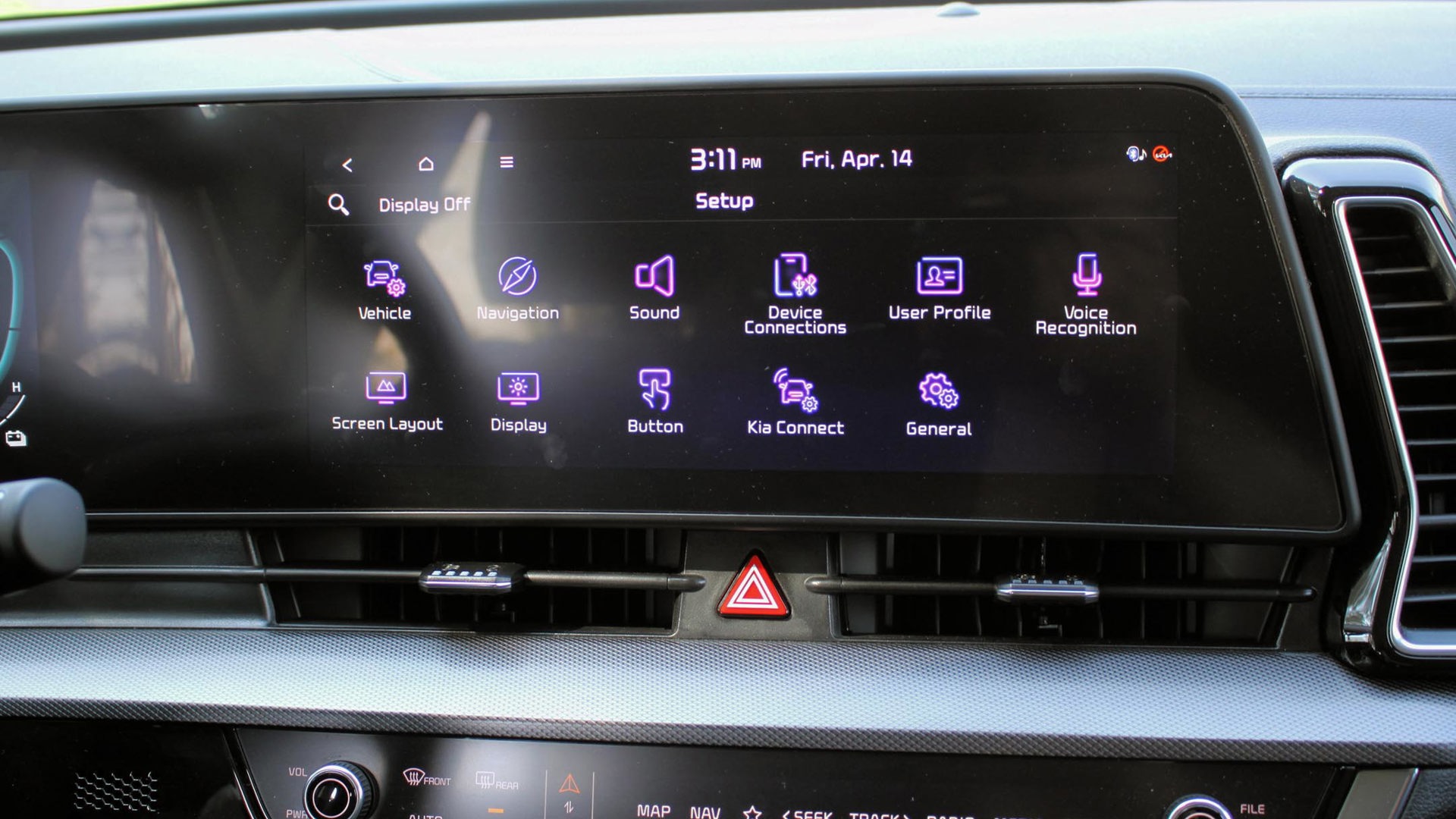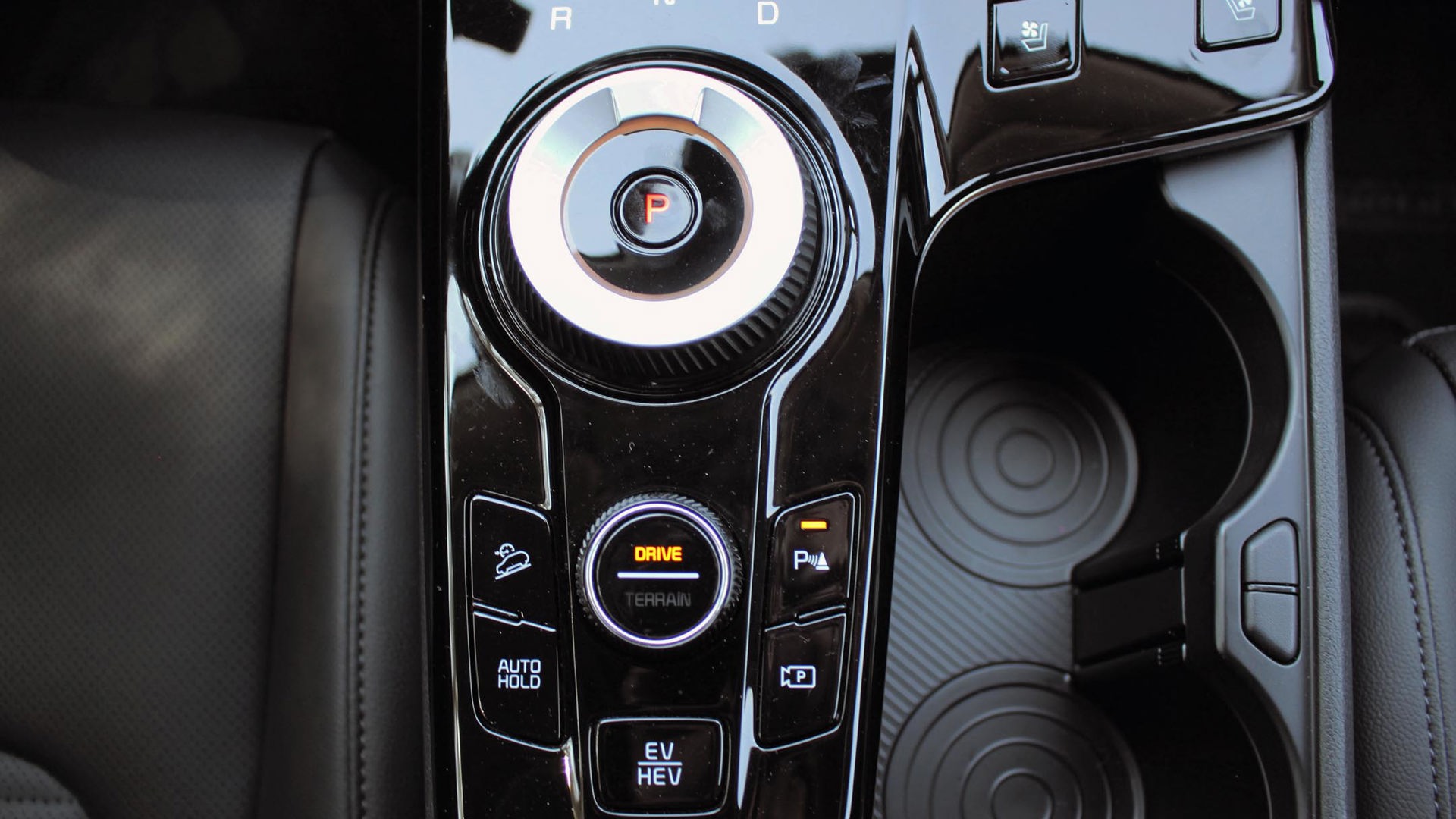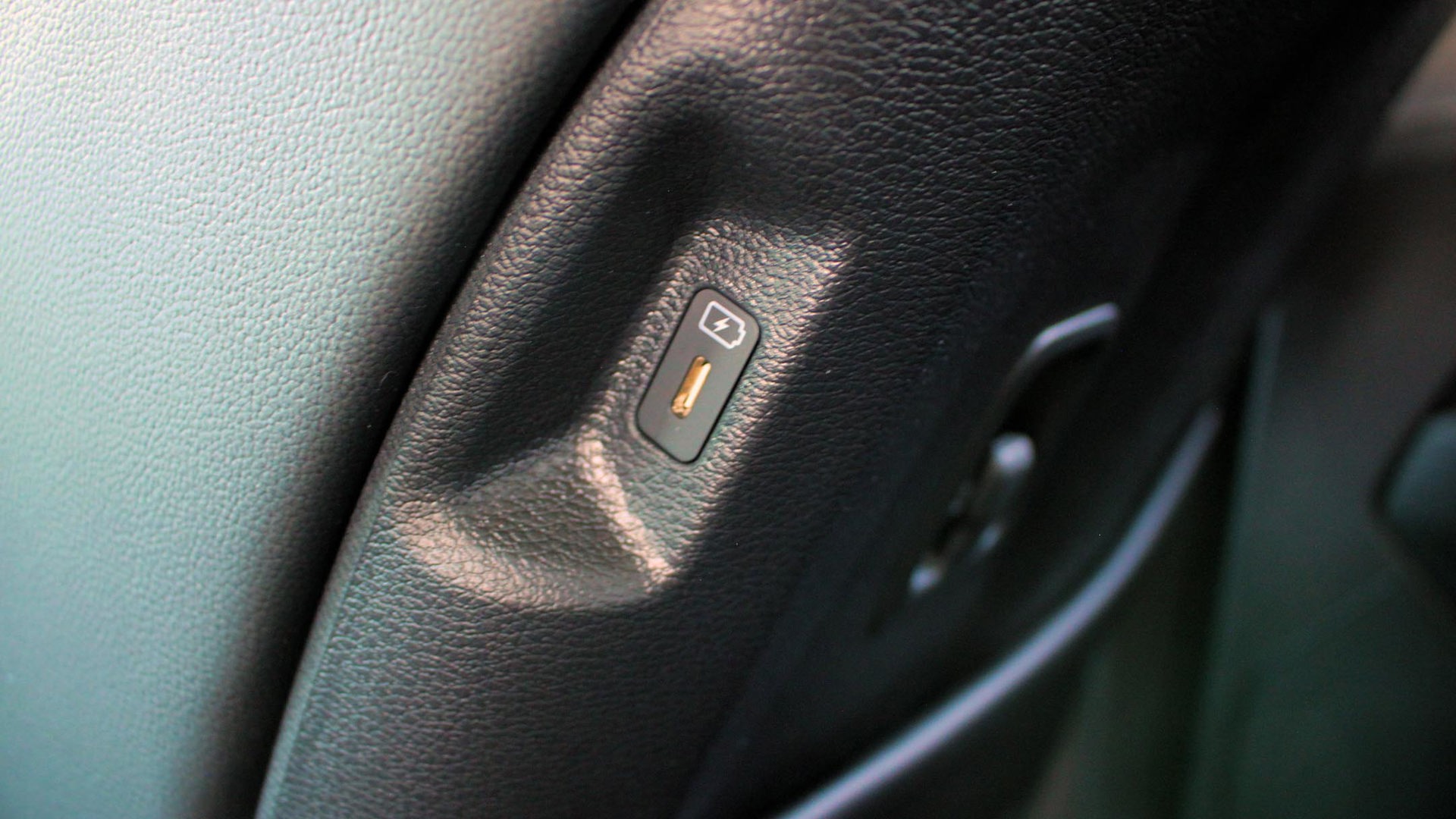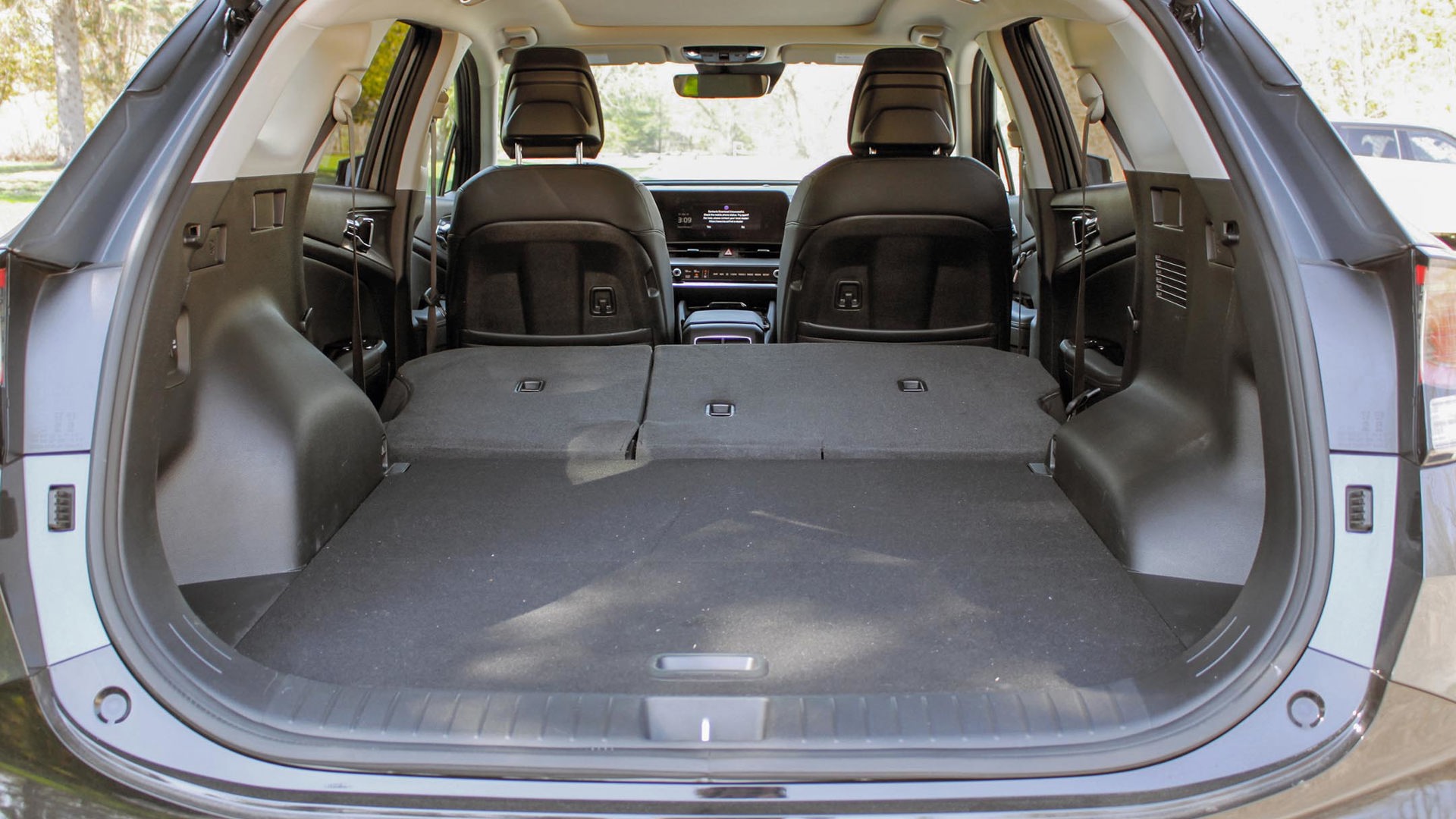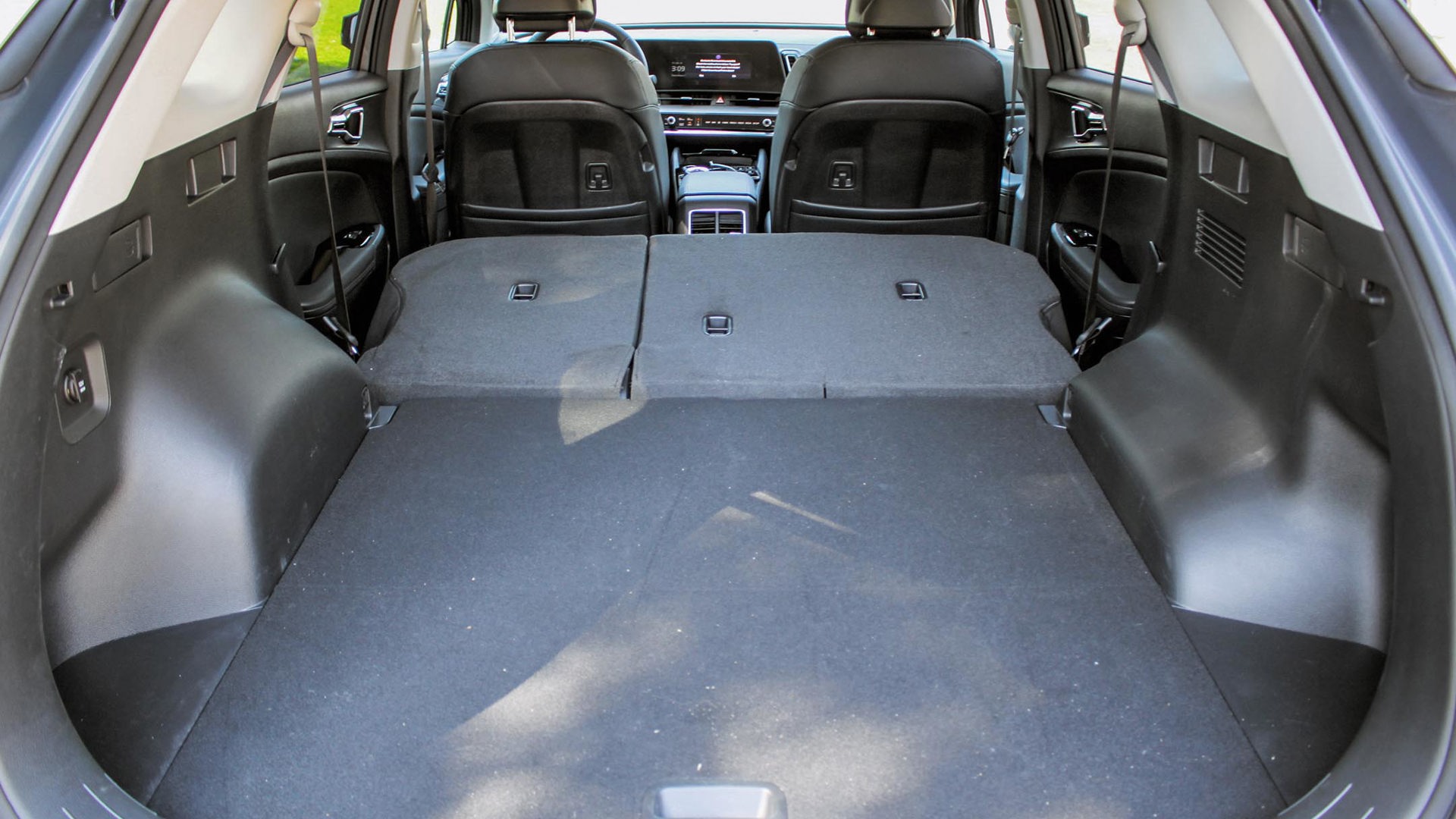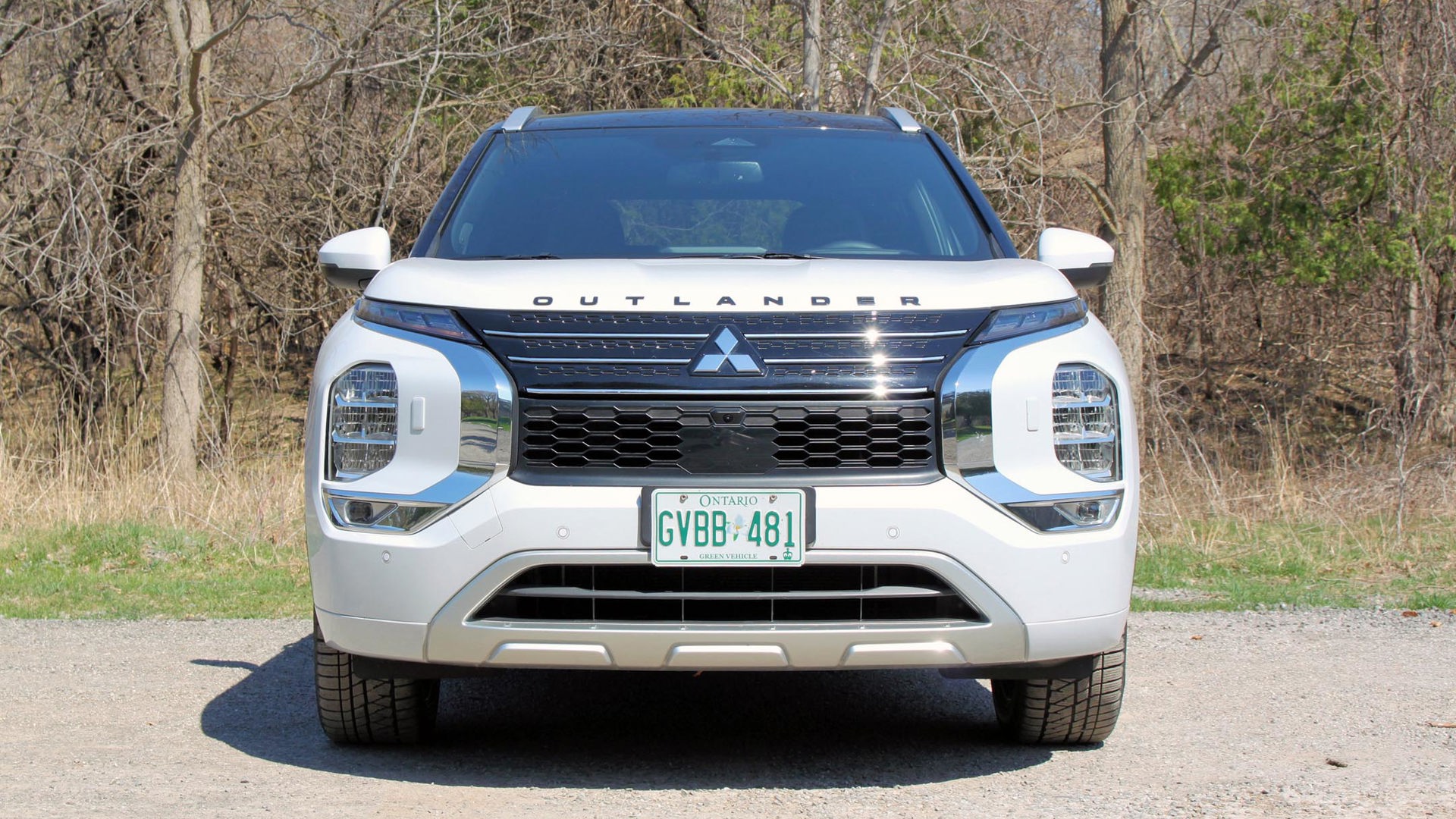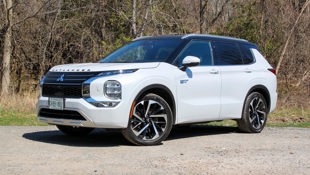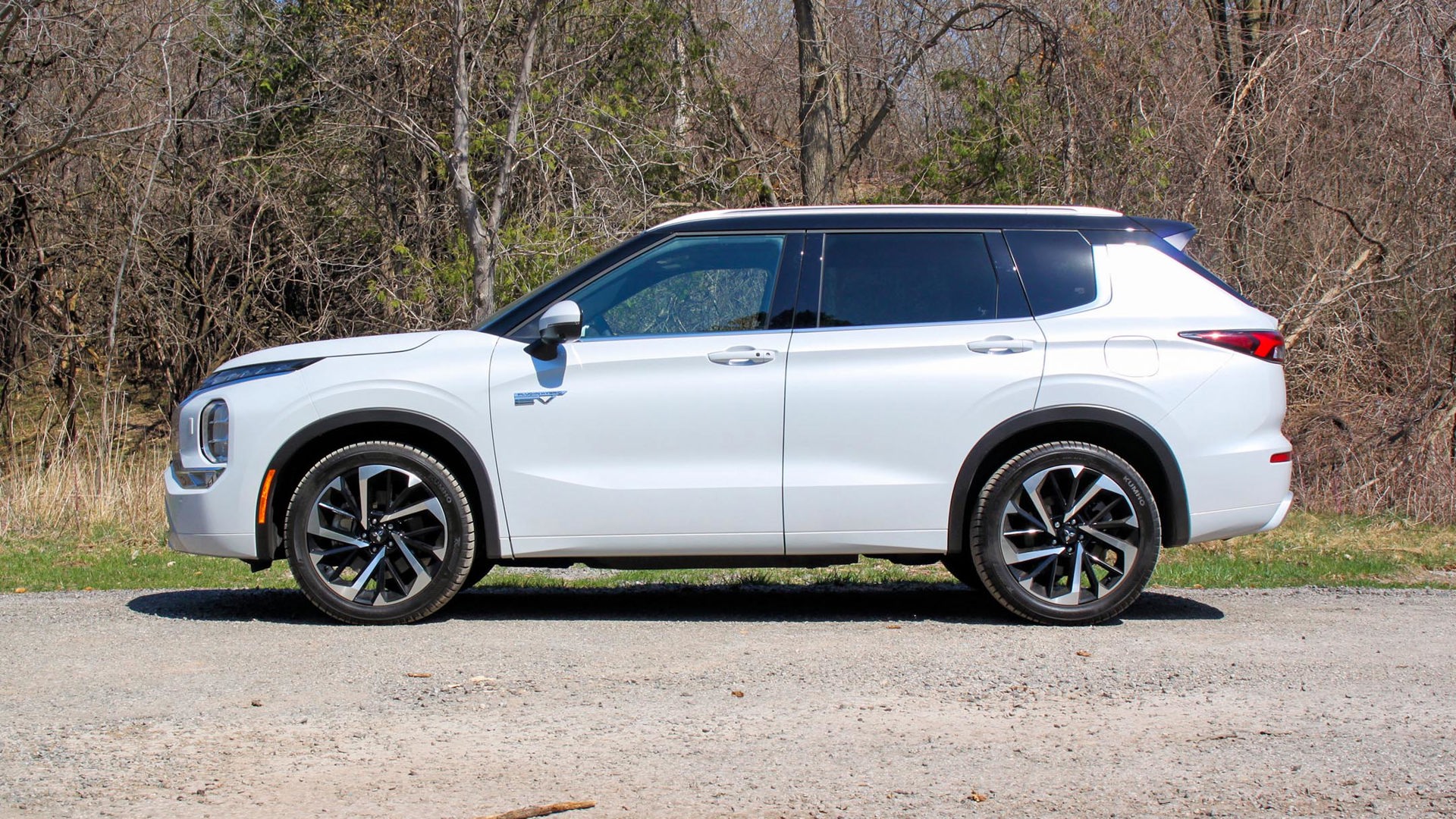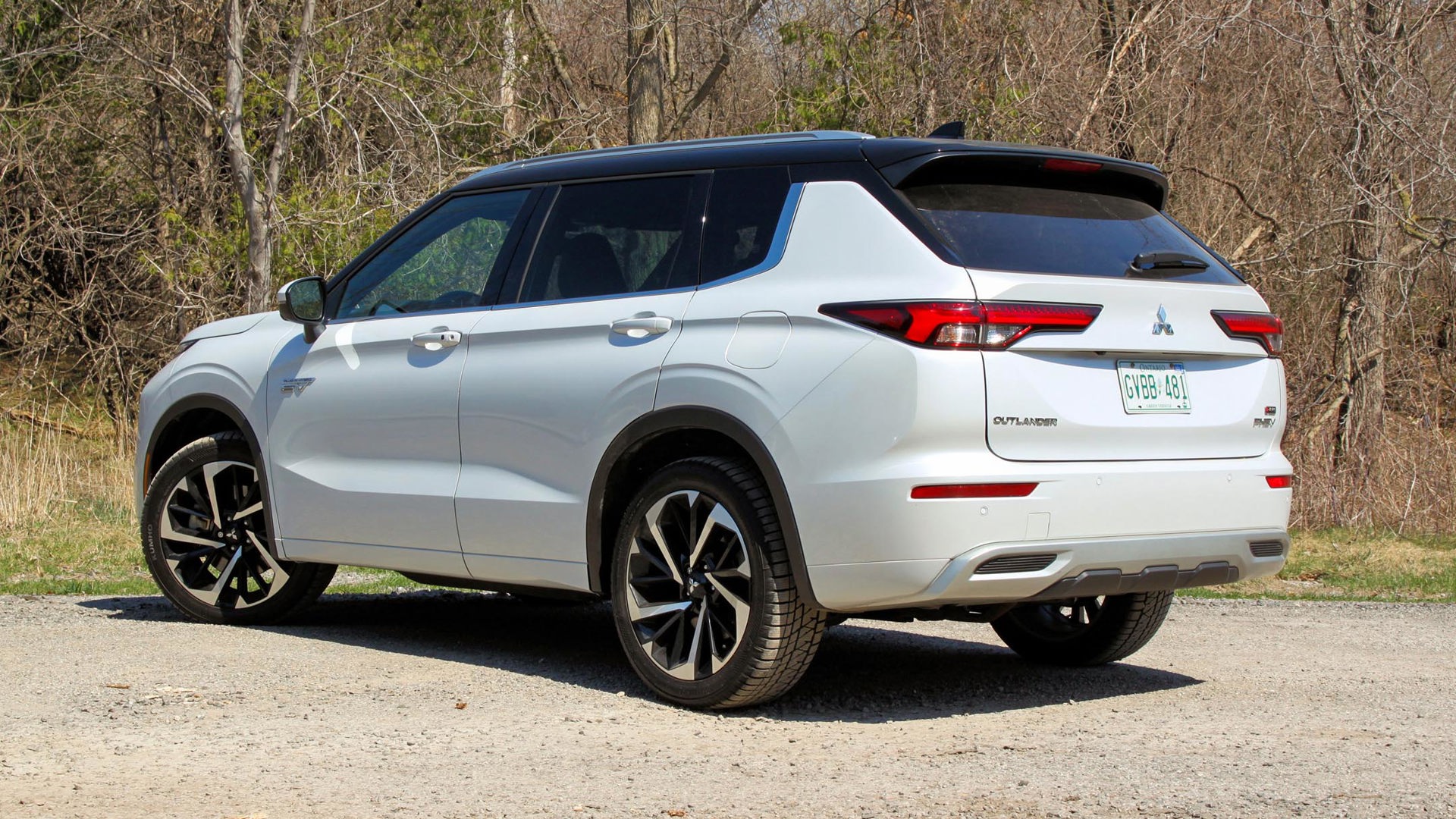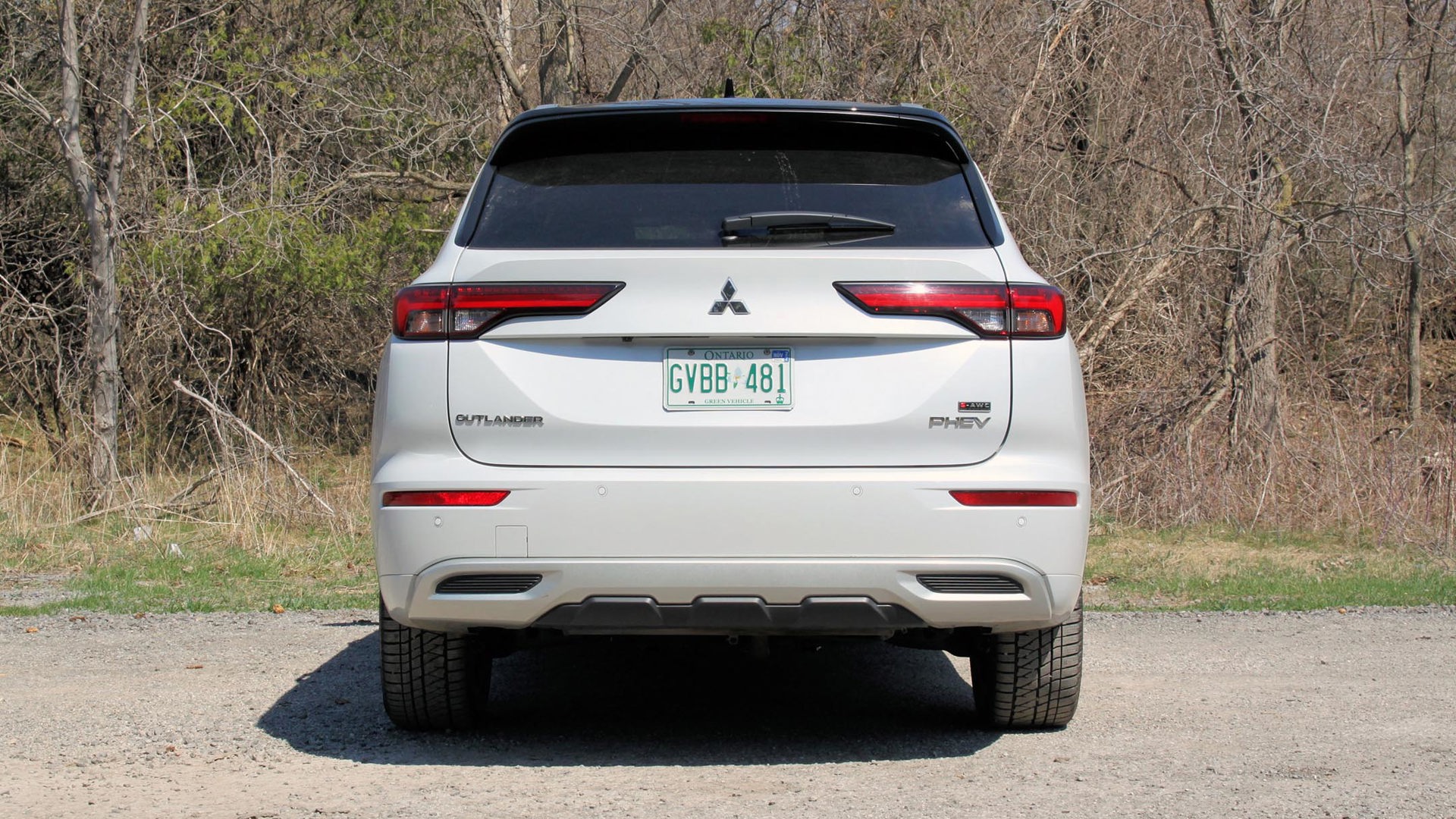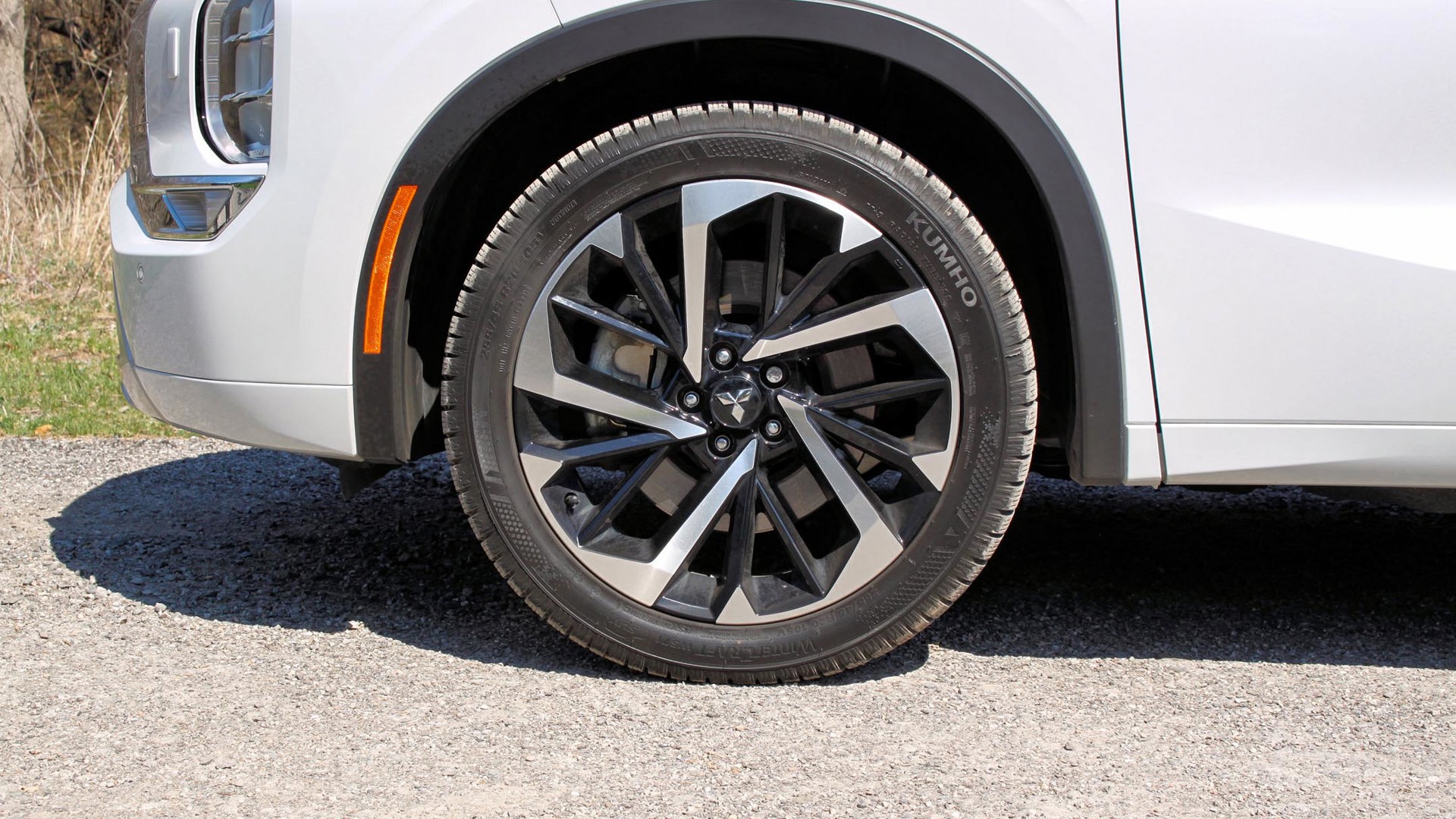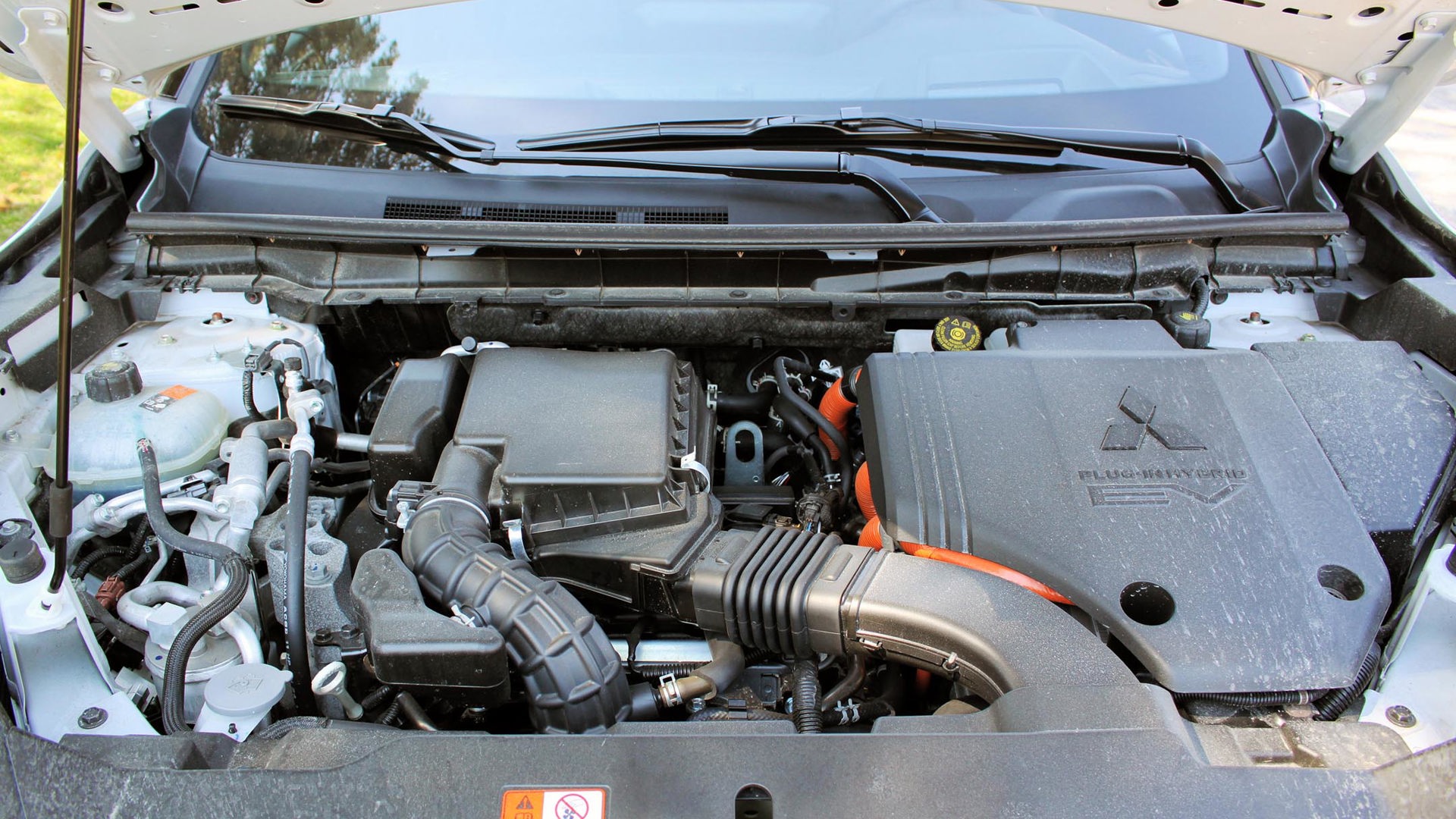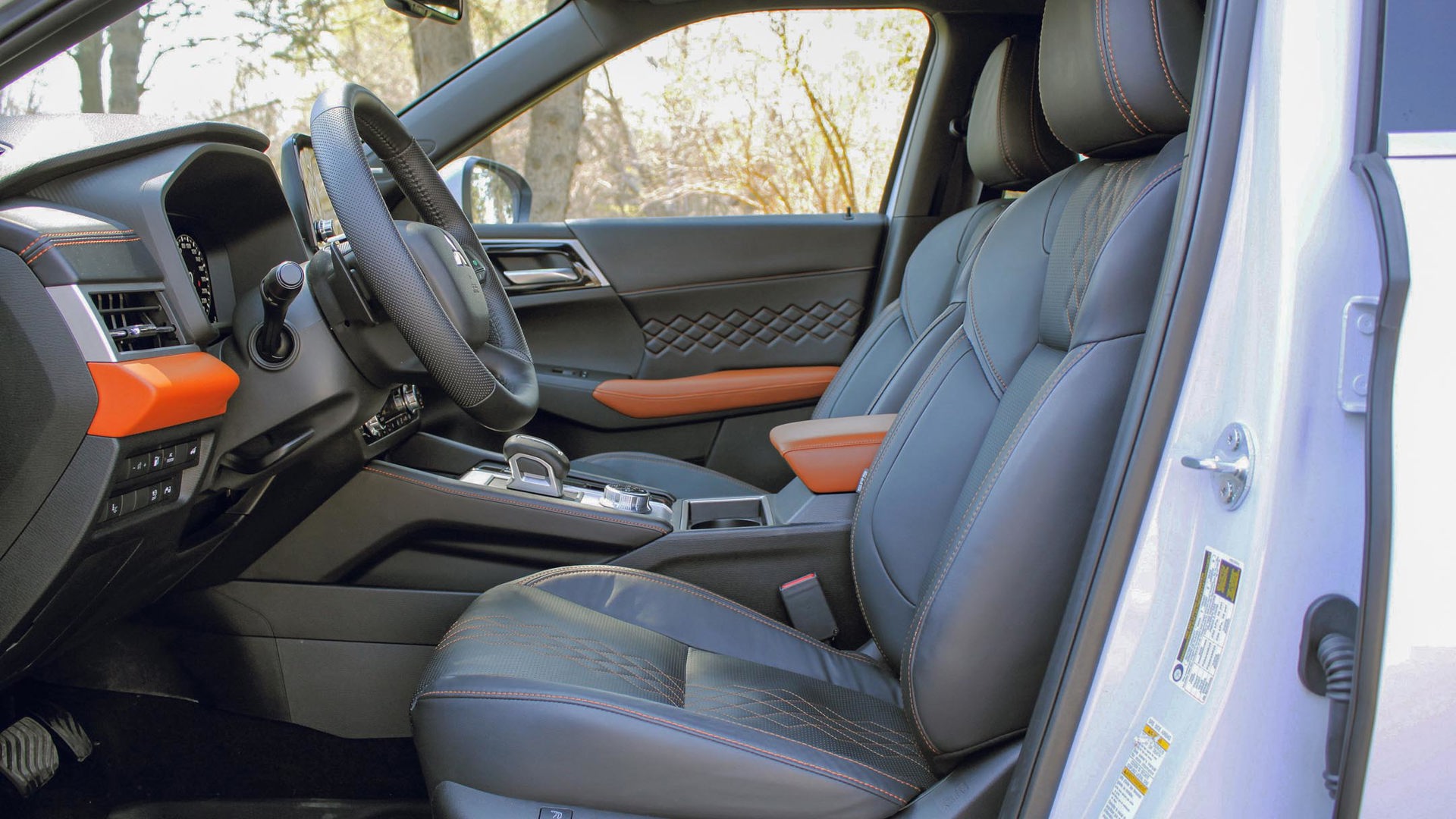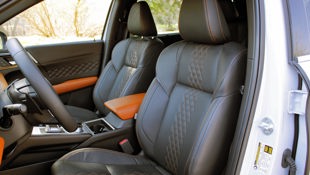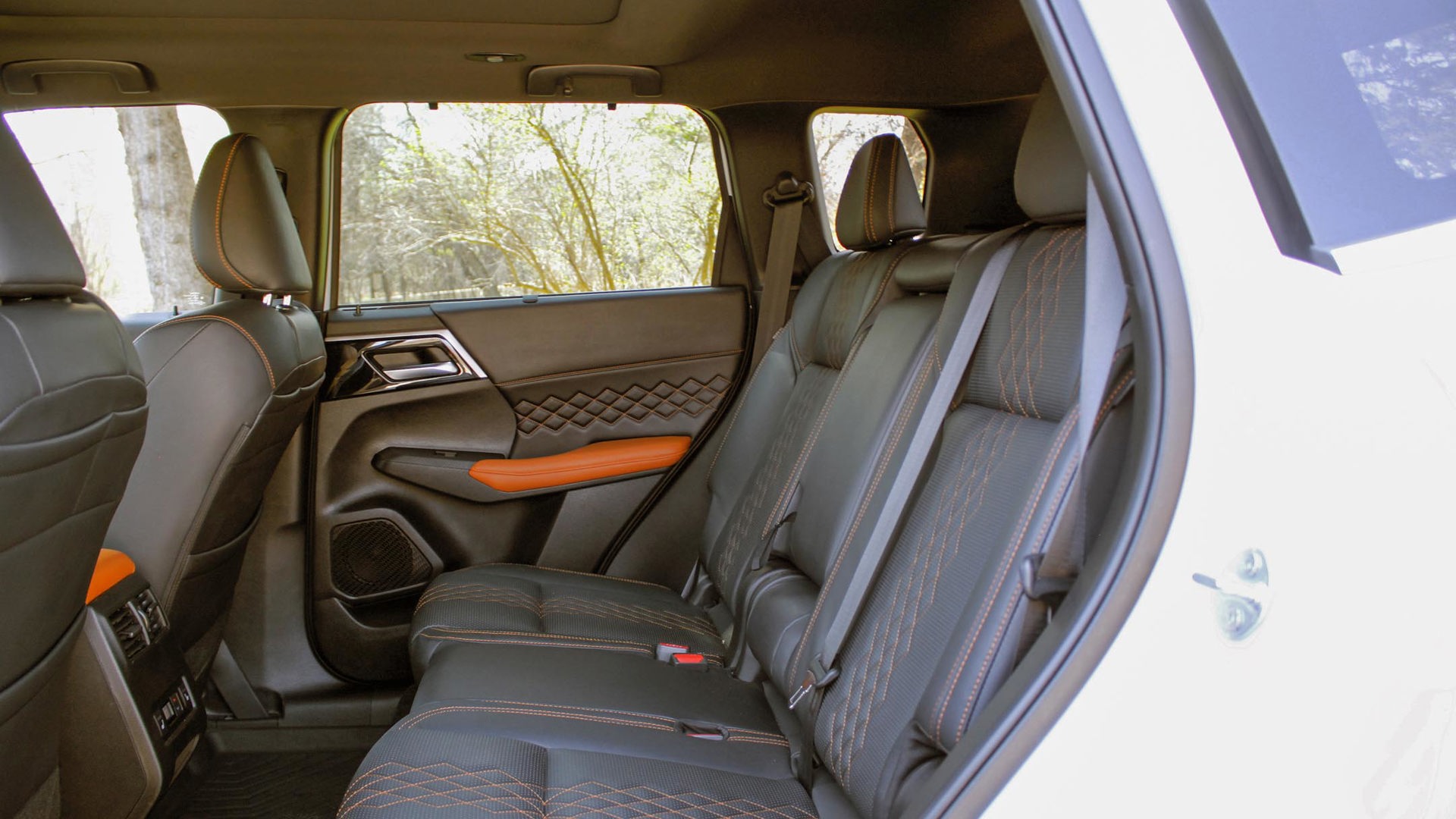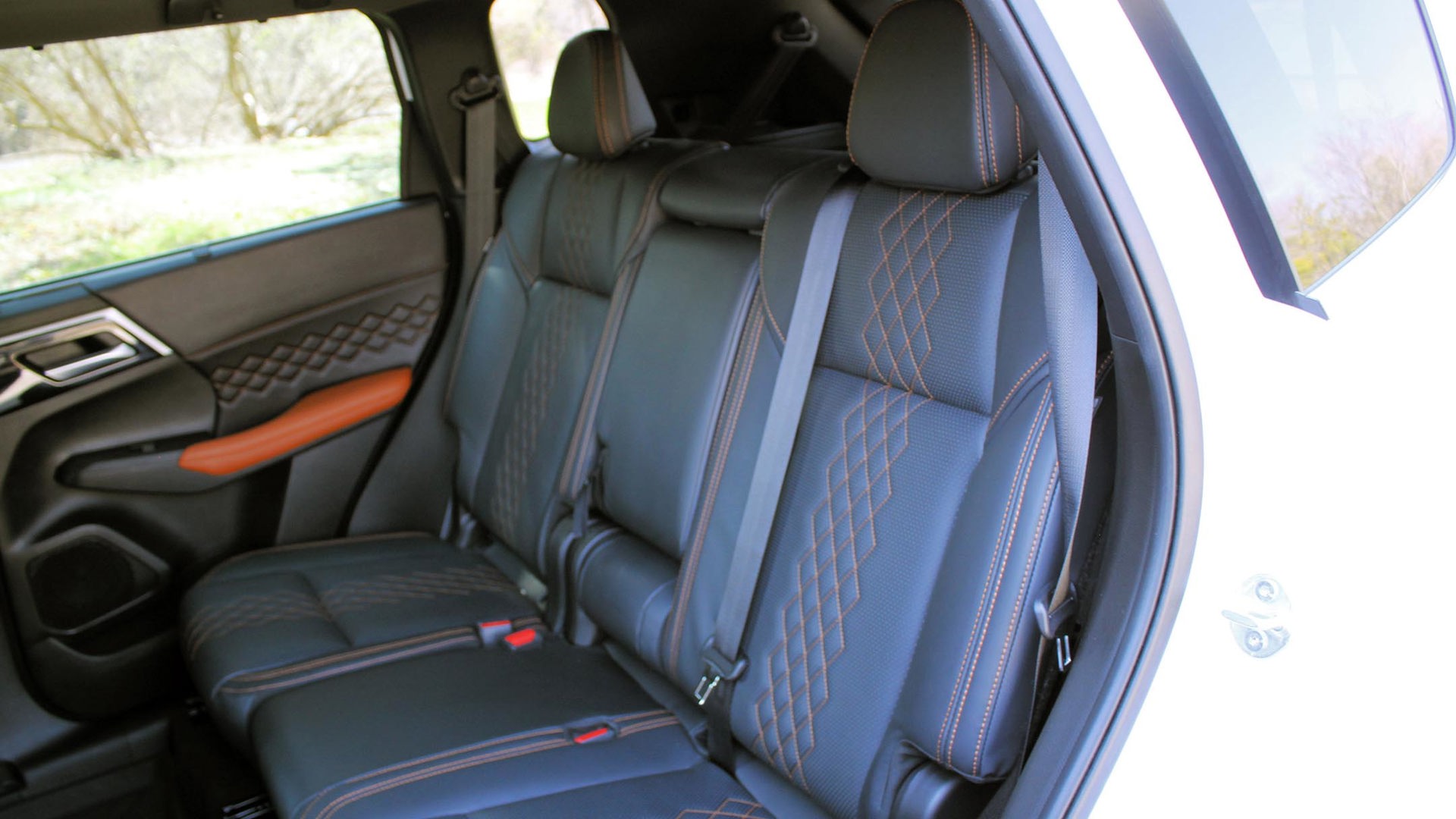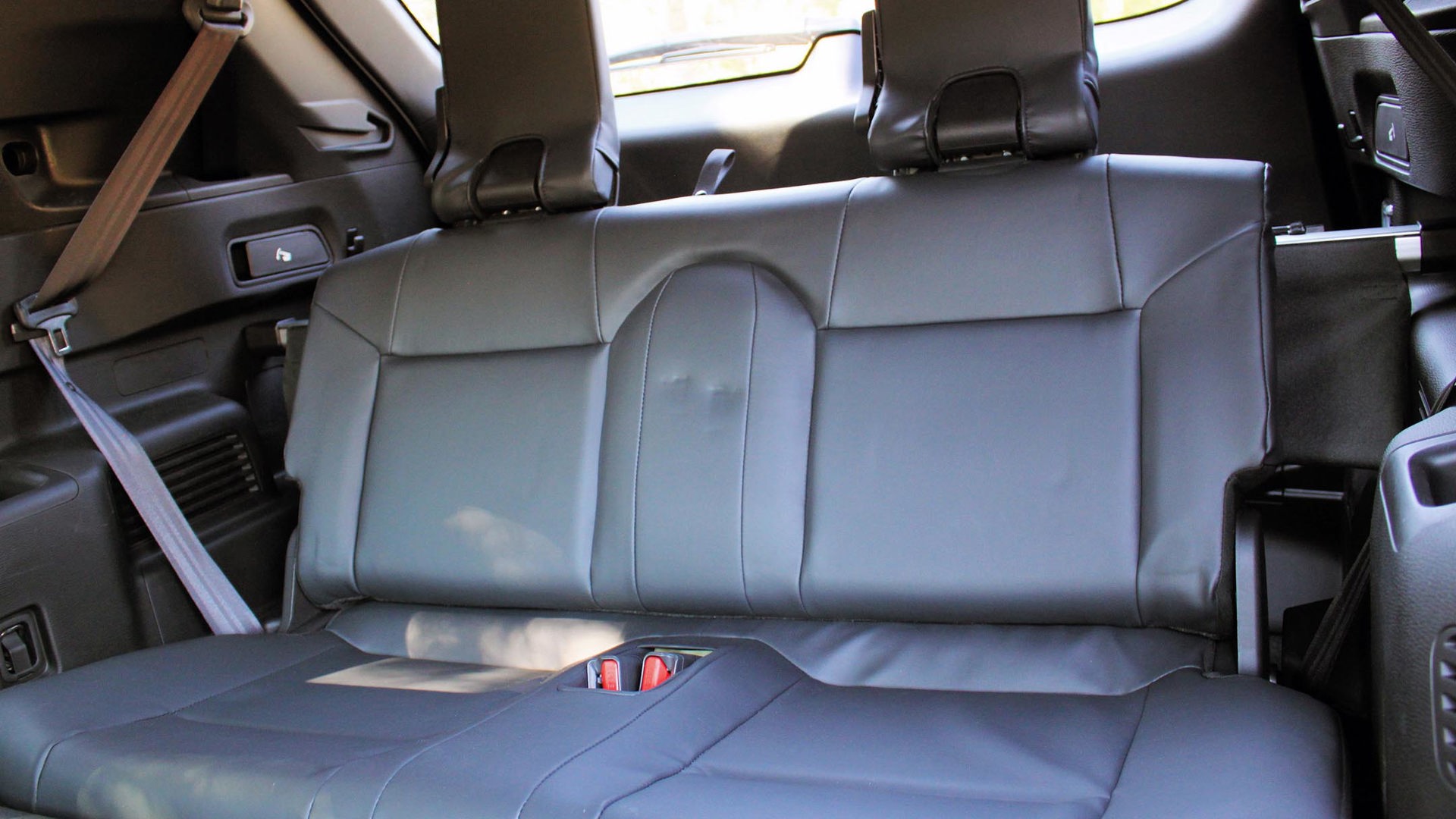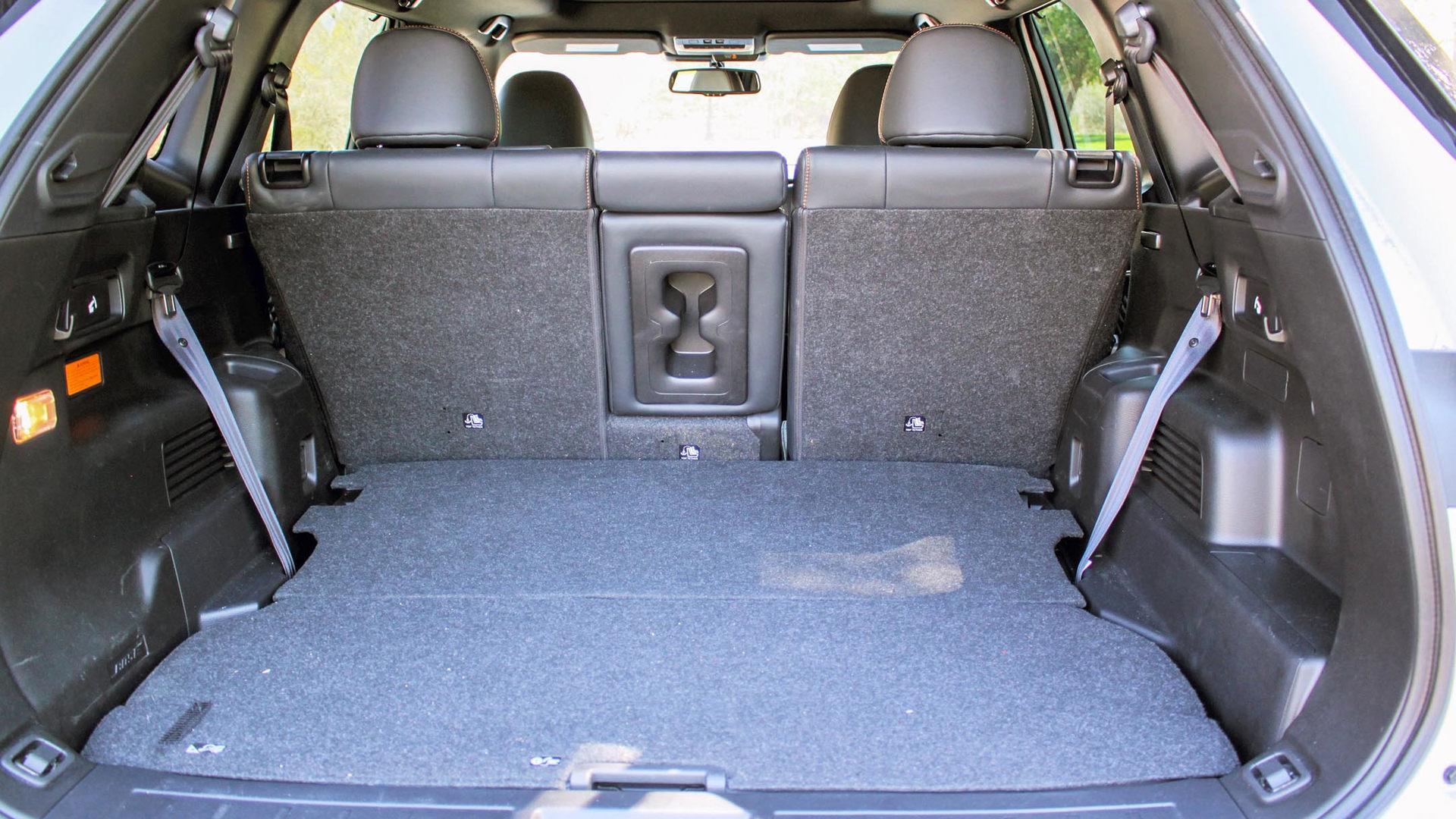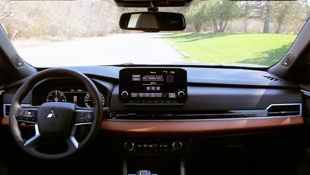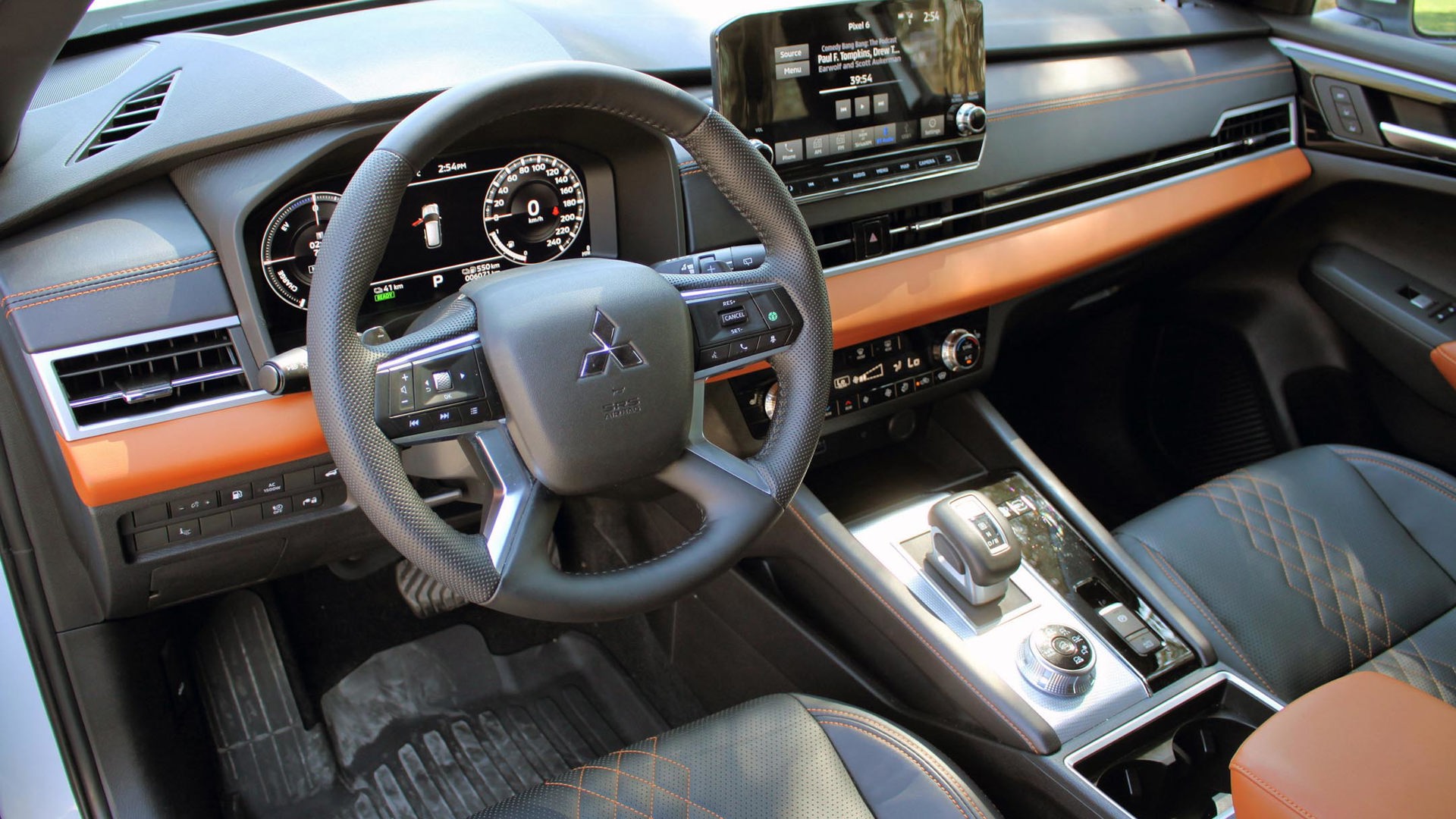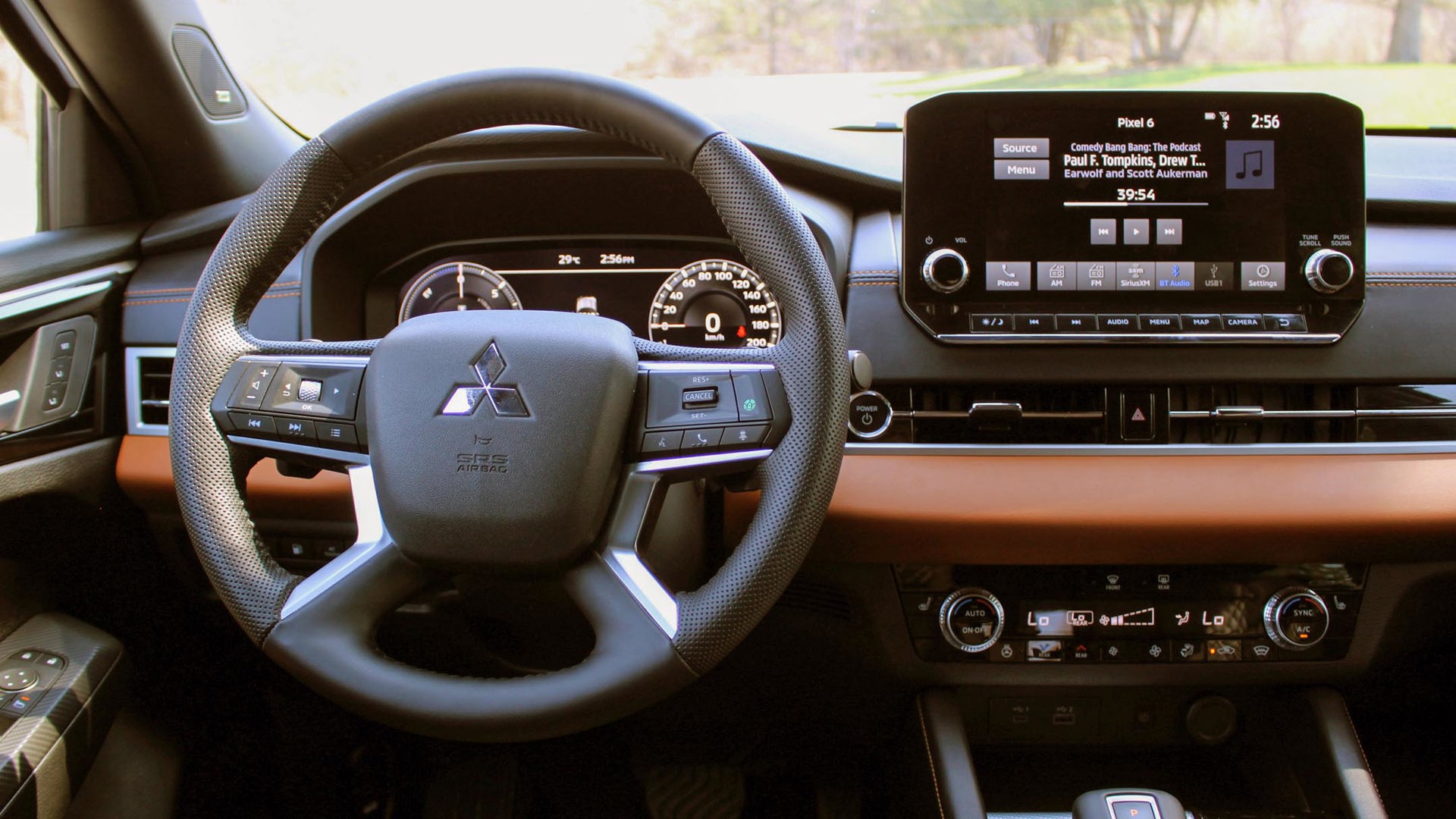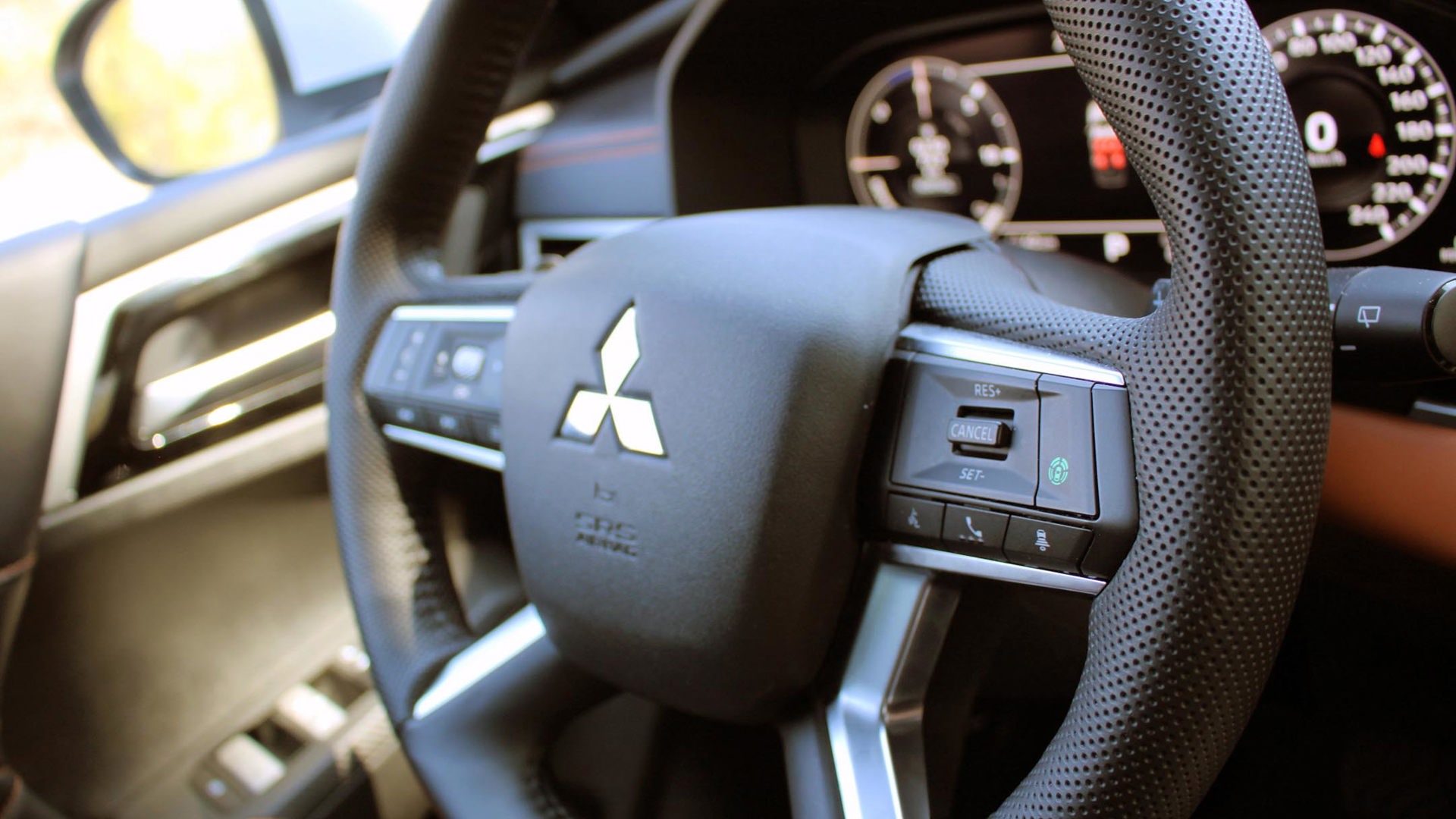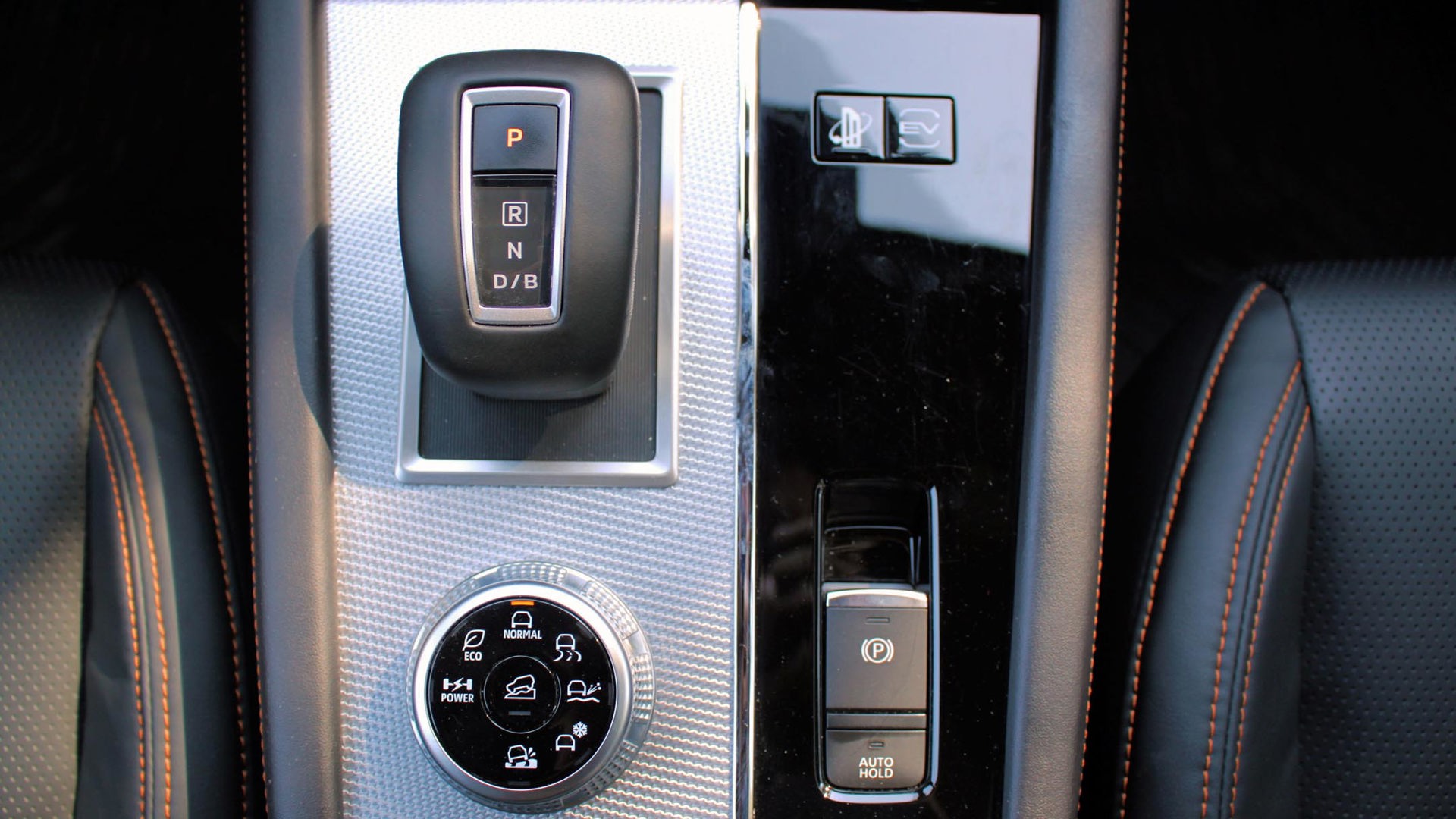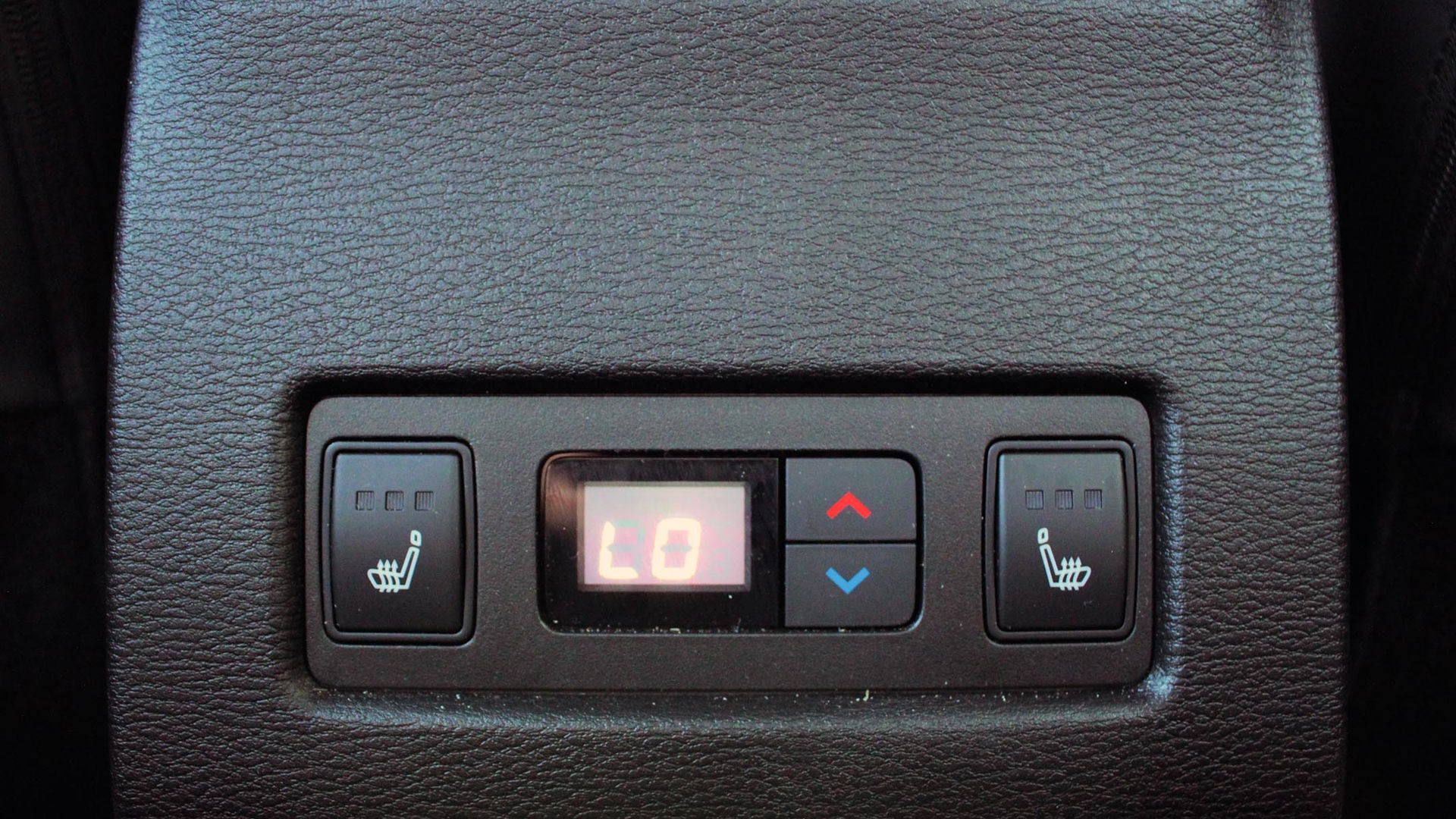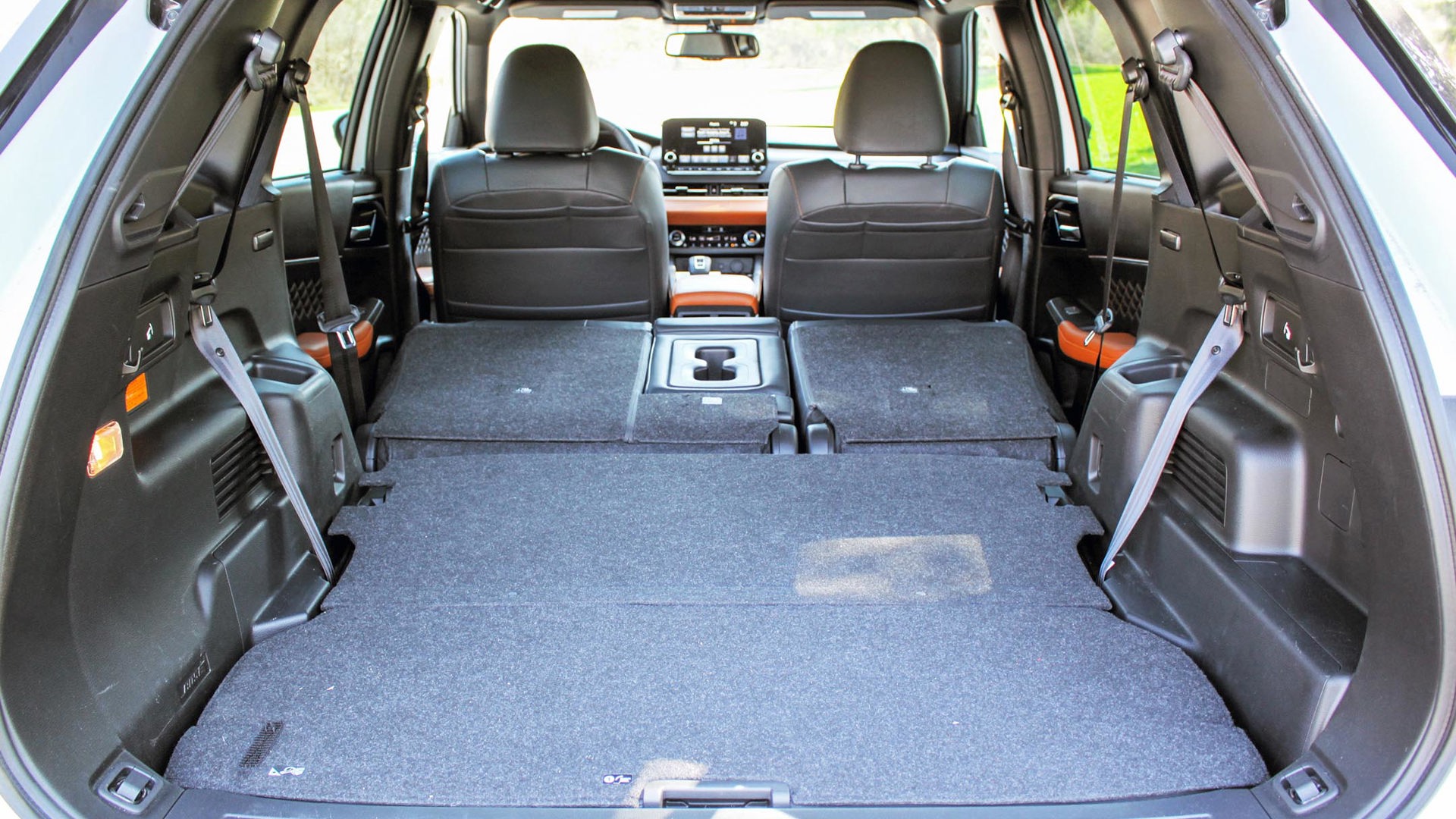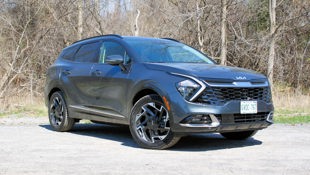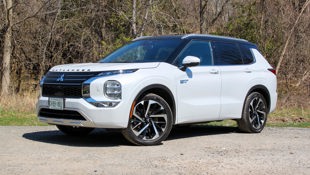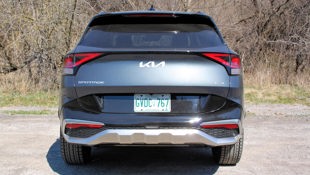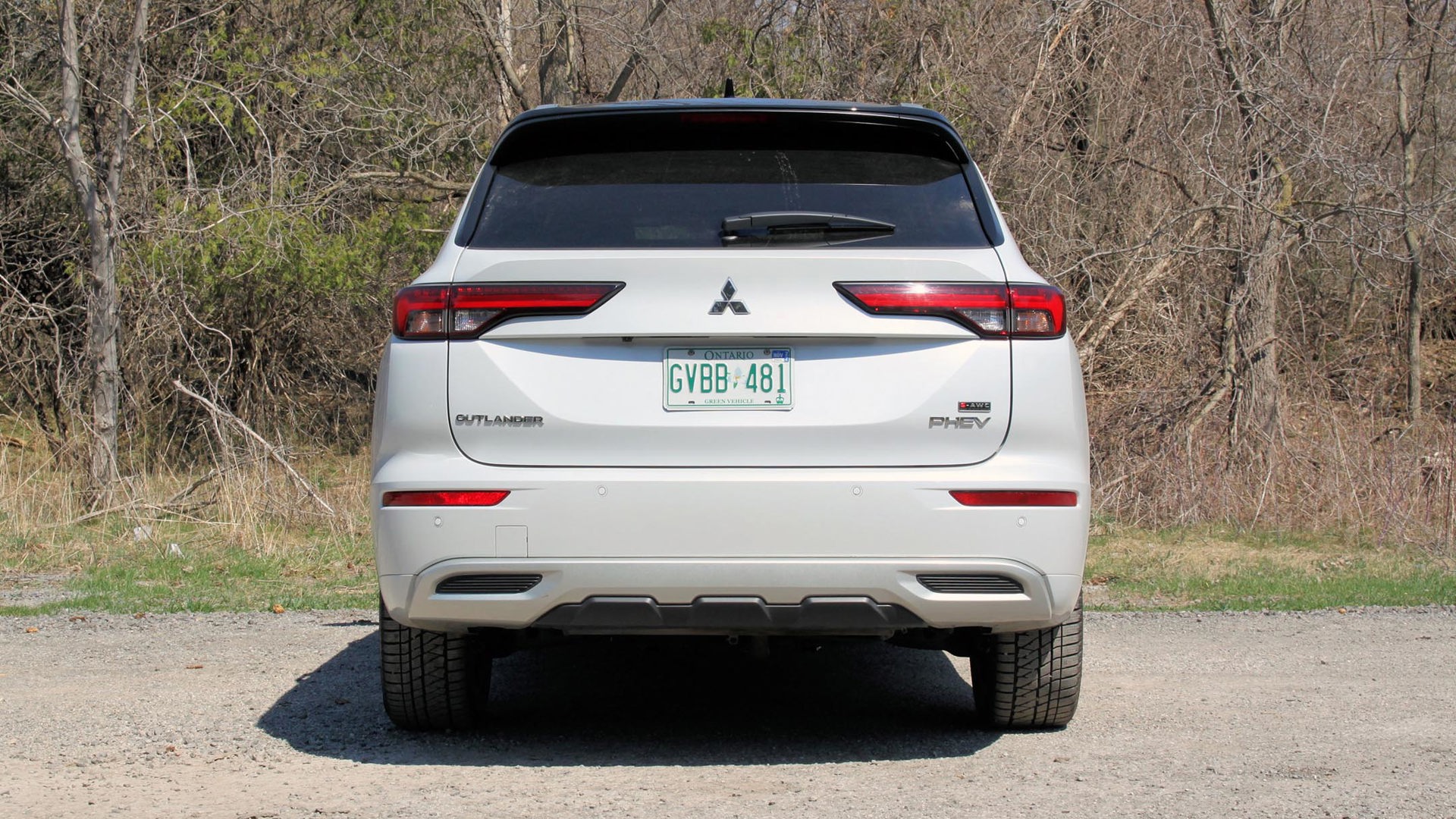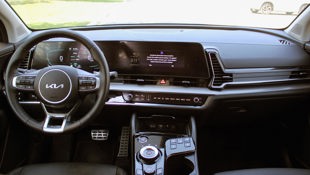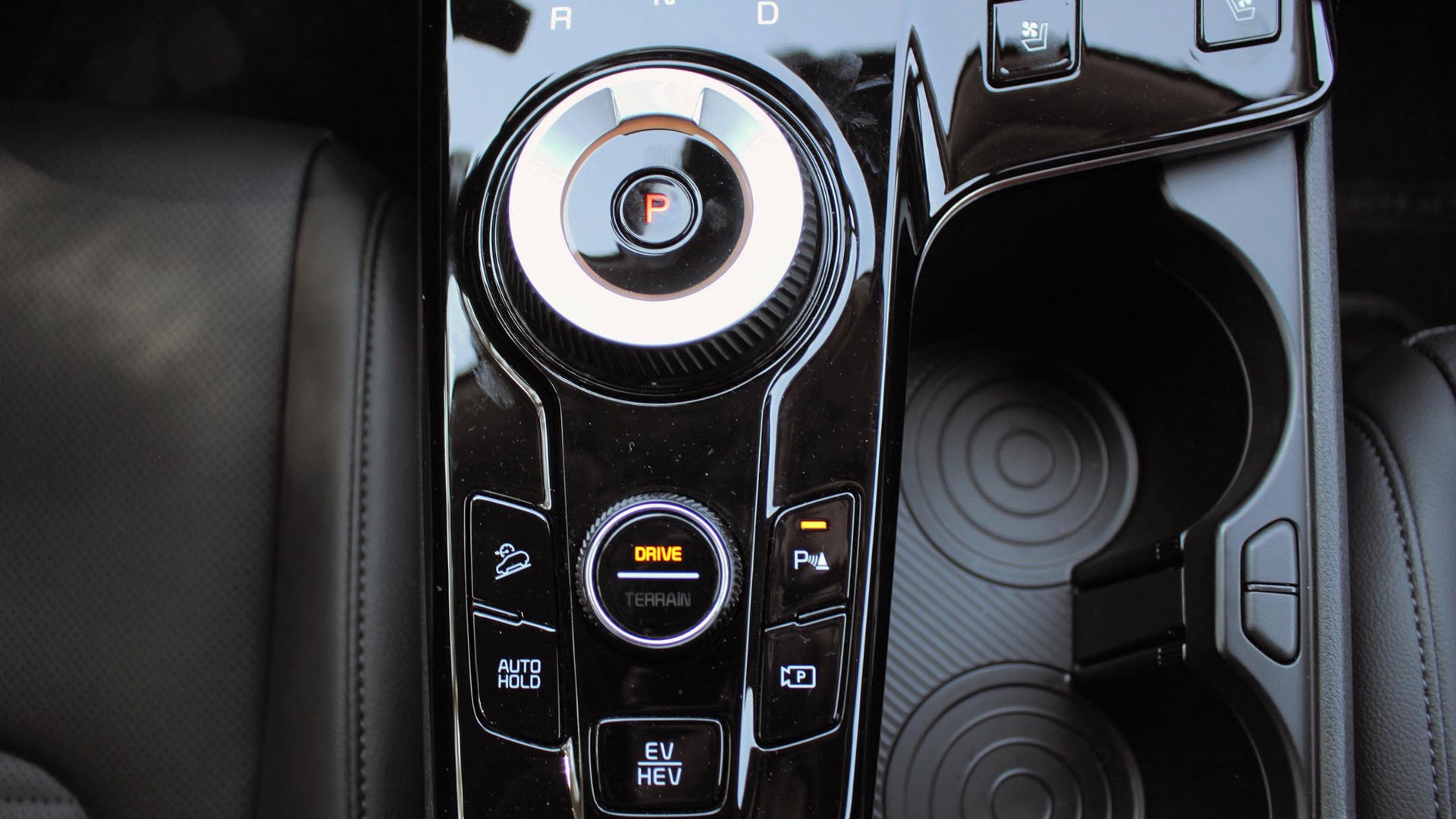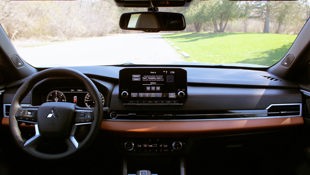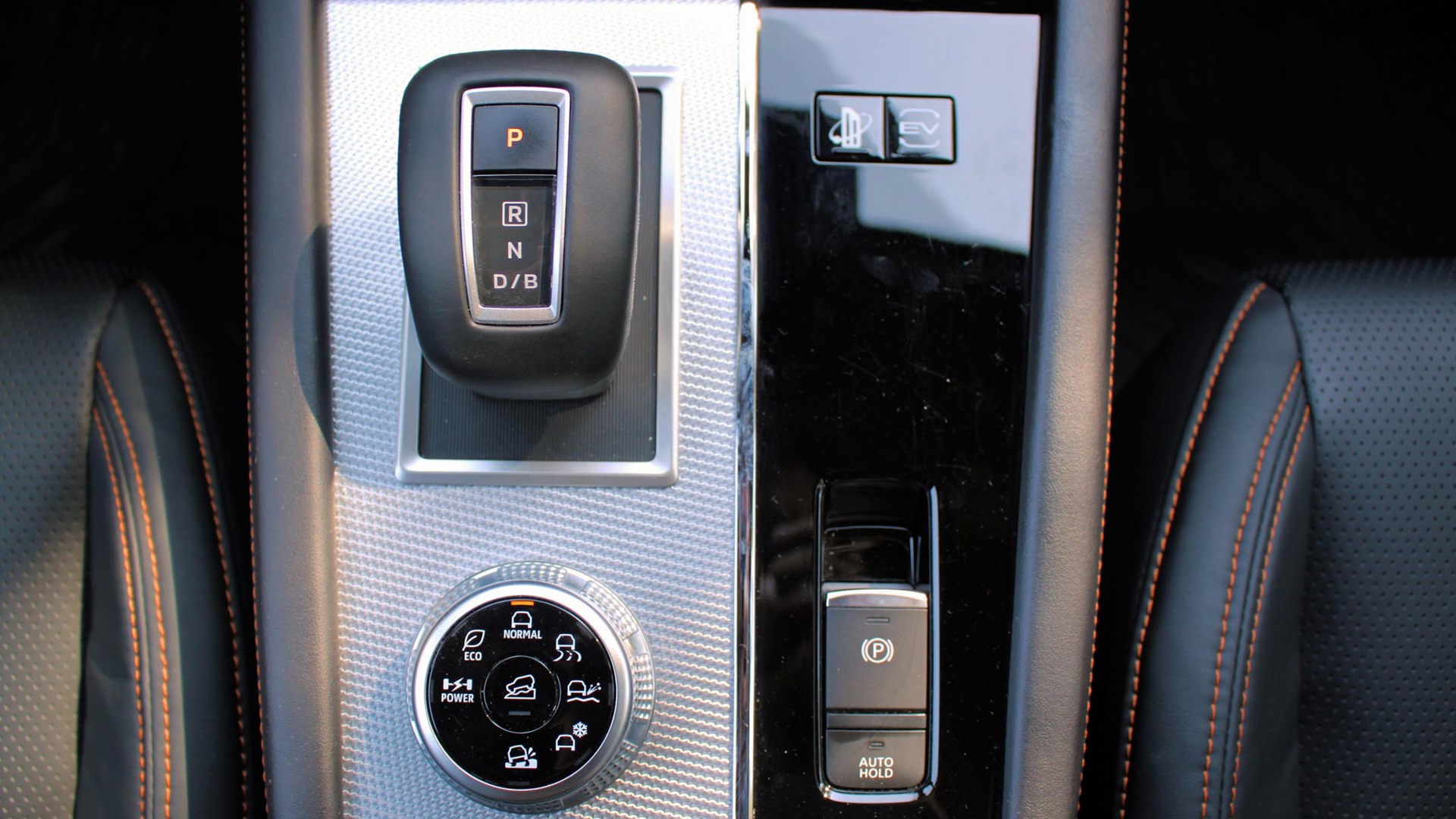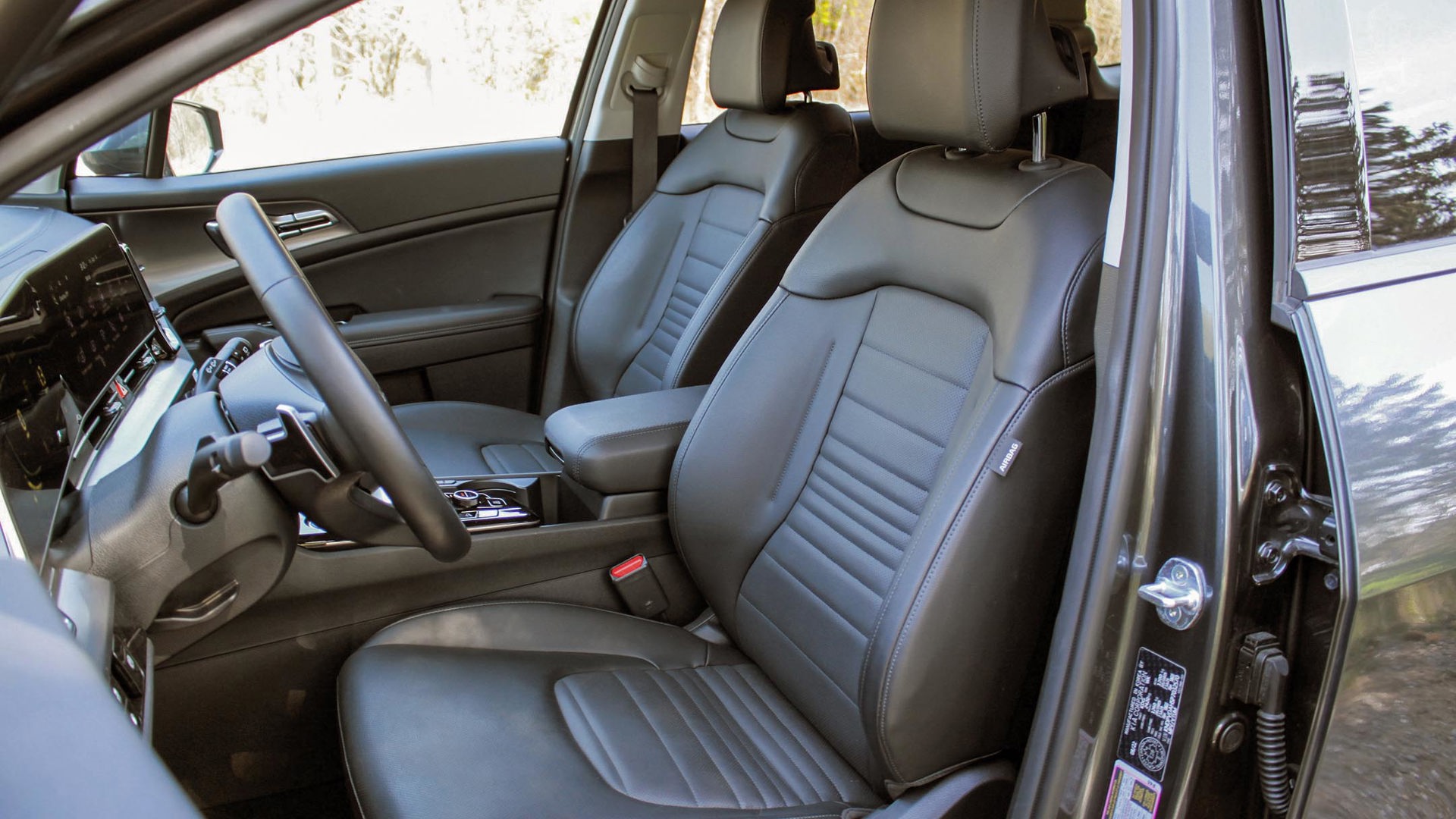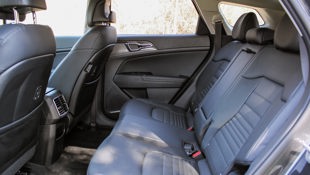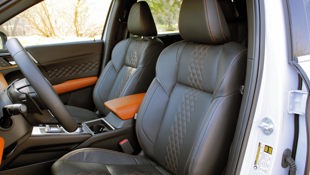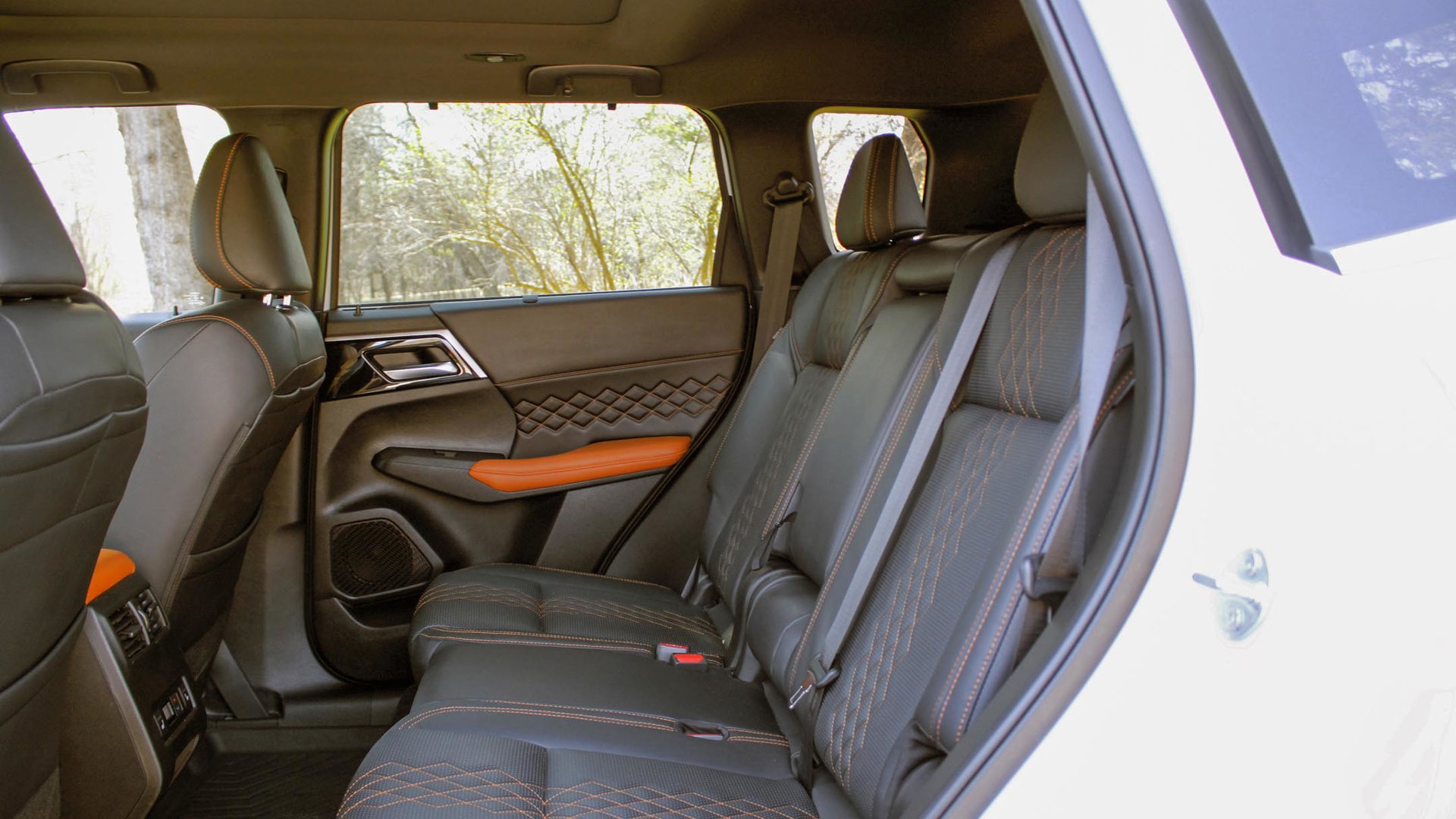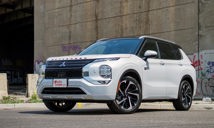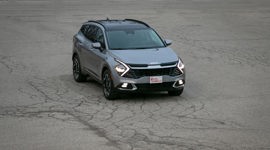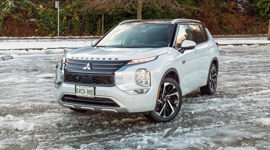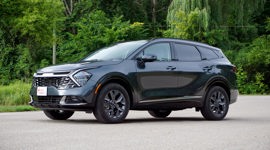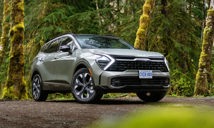Comparison Data
|
2023 Kia Sportage PHEV SX
|
2023 Mitsubishi Outlander PHEV GT Premium
|
|---|---|
|
Engine Displacement
1.6L
|
2.5L
|
|
Engine Cylinders
I4
|
I4
|
|
Peak Horsepower
261 hp
|
248 hp
|
|
Peak Torque
258 lb-ft
|
332 lb-ft
|
|
Fuel Economy
6.6 / 6.7 / 6.7 L/100 km cty/hwy/cmb
|
9.2 / 8.7 / 9.0 L/100 km cty/hwy/cmb
|
|
Cargo Space
977 / 1,855 L seats down
|
331 / 948 / 2,256 L behind 3rd/2nd/1st row
|
|
Base Price
$49,295
|
$57,048
|
|
A/C Tax
$100
|
$100
|
|
Destination Fee
$1,950
|
$1,950
|
|
Price as Tested
$51,345
|
$59,098
|
|
Optional Equipment
None
|
None
|
The number of plug-in-hybrid (PHEV) crossovers has grown in recent years — although not exactly exponentially — with gas–electric options from Toyota Mitsubishi, Hyundai, and Kia making up the compact segment.
The recently redesigned 2023 Mitsubishi Outlander PHEV arrives with many important upgrades to maintain its status as a segment leader, while newer entries include the 2023 Kia Sportage PHEV. The latter was newly introduced this year after nearly two decades as a gas-only model, with good all-electric range that has it nipping at the heels of its longstanding predecessor.
Styling
The Outlander’s recent overhaul is hard to ignore, as the old design seemed to be stuck in the early 2000s. However, the new look feels adapted from its platform-mate, the Nissan Rogue, leaving the Outlander with a few awkward proportions as it struggles to incorporate Mitsubishi’s design language into a cohesive exterior look.
There are plenty of shiny bits in the grille, and a mix of small and large lighting elements that give the front end plenty of visual heft, which is carried across the profile and around to the rear of the vehicle. It leaves the Outlander looking a bit bigger than the Sportage — and it is, albeit barely. Its wheelbase is actually 49 mm (1.9 in) shorter, leaving it with longer overhangs and a more imposing look than its rival.
Kia’s styling division has been working overtime to make its SUVs look rugged, tough, and high-tech. As a result, the Sportage has harsher creases in its bodywork, along with sleek, angled headlights. It all helps to hide its slightly smaller size, and it’s handsome from most angles, although the bland back end could use some sprucing up.
The cabins express different intentions. The Outlander wants to wow with upscale-looking materials, stitched leather hides, and tactile controls. The Sportage aims to impress with technology, featuring large infotainment displays, and a trick touch panel that switches between HVAC and infotainment controls. The upholstery — along with the seats themselves —isn’t as upscale, but the gap in quality between the two is slim.
Kia Sportage PHEV: 7/10; Mitsubishi Outlander PHEV: 7/10
Practicality
Not only is the Outlander longer overall, but it has more seating inside. This PHEV is packing a third row of questionable usability, but at least it’s there. However, behind the third row is a meagre 331 L of space. That expands to 948 L with the third row folded, while stowing the second row opens up a total of 2,256 L.
The Sportage has 977 L of storage behind the second-row seats, which expands to 1,855 L when they’re folded. The Kia also offers the ability to raise the cargo floor to make a flat surface or lower it for a bit more room.
Kia Sportage PHEV: 7/10; Mitsubishi Outlander PHEV: 8/10
User Friendliness
It may have less storage space and plain-looking upholstery, but the Kia Sportage has a nicer interface and is generally easier to use. Two 12.3-inch displays sit atop the dashboard, with one performing infotainment duties, while the other is a digital gauge cluster. The screens are bright and crisp, with the infotainment screen being responsive and high resolution. One pain point in the Sportage is the panel below the infotainment screen, which switches between infotainment and HVAC controls, but you have to pay attention to what is displayed on that screen to avoid making the wrong input.
The Outlander also features two screens: a 12.3-inch digital dash and a nine-inch infotainment screen. There’s also a head-up display to keep information up front and centre. The screens are a bit less inviting than the ones in the Sportage, and the infotainment screen in particular lacks finesse, with uninspired graphics that look dated.
Kia Sportage PHEV: 8/10; Mitsubishi Outlander PHEV: 7/10
Fuel Economy
The whole point of these PHEVs is to save gas and go the distance. On electric power alone, the Outlander PHEV is rated to travel 61 km with its 20-kWh battery. The Sportage isn’t far behind with 55 km with its 13.8-kWh battery, which makes it a tiny bit more efficient in terms of energy usage, but the smaller battery impacts the total electric range.
The Outlander also has the added gimmick of supporting DC fast-charging, allowing its battery to recharge to 80 per cent through a CHAdeMO charger in just 38 minutes. Otherwise, it takes 6.5 hours with a Level 2 charger, or 16 hours with a wall socket portable charger. The Sportage will take just two hours to fully recharge on a Level 2 charger, or 11 hours on a wall socket portable charger.
The efficiency discussion also extends to the gas motors. The 2.5L in the Outlander is far less efficient, returning 9.0 L/100 km combined, while the Sportage delivers 6.7.
Kia Sportage PHEV: 9/10; Mitsubishi Outlander PHEV: 8/10
Power
The Sportage delivers this strong efficiency by using a 1.6L turbocharged four-cylinder and a single electric motor, which combine for 261 hp and 258 lb-ft of torque. The motor is a bit on the buzzy side, but it gets the Sportage up to speed quickly and confidently, while the six-speed automatic transmission swaps cogs seamlessly.
The Outlander features two electric motors, one at the front and another for the rear wheels, which work in collaboration with a 2.5L four-cylinder engine. Despite the additional electric motor and larger engine, the Outlander features less power than the Kia with 248 hp, but a plentiful 332 lb-ft of torque.
Kia Sportage PHEV: 8/10; Mitsubishi Outlander PHEV: 7/10
Driving Feel
That minute difference in horsepower shouldn’t result in a massive difference in driving feel, but the Sportage has a distinctly more responsive drive than the Outlander. I’d wager that the difference is due to the Mitsubishi weighing about 227 kg (500 lb) more, not to mention its larger dimensions, which give it a robust feel on the road, but ultimately one that is less agile and more cumbersome.
Kia Sportage PHEV: 8/10; Mitsubishi Outlander PHEV: 7/10
Comfort
From the front seats, the Outlander is quieter and feels more spacious, with more comfortable thrones. However, the rear seats in the Kia Sportage feel more accommodating than the second row of the Outlander. Considering how limited the third row is in the Mitsubishi, it’s worth suggesting the Kia is the more passenger-friendly option here if you prefer more space over outright seating capacity.
Kia Sportage PHEV: 7/10; Mitsubishi Outlander PHEV: 7/10
Features
Both automakers offer plenty of features and technology in these PHEVs, and that’s no surprise given their asking prices (more on those later). Entry-level Sportage PHEVs come with just about everything you need including heated and cooled memory seats, a heated steering wheel, a wireless phone charger, and dual-zone climate control. The higher trims include an upgraded sound system, the digital instrument display, projection LED headlights, and more advanced driver assists and safety tech.
There are more trims of the Outlander PHEV offered, which allows for more packages and options, but even base models are well equipped. Heated front seats, dual-zone climate control, an eight-inch infotainment screen, and the 12.3-inch digital gauge cluster are all standard. Top trims add heated rear seats, massaging front seats, a three-zone climate control, wireless phone charging, wireless Apple CarPlay, a one inch larger infotainment screen, premium stereo, and head-up display.
Kia Sportage PHEV: 8/10; Mitsubishi Outlander PHEV: 8.5/10
Safety
Both vehicles have been rated by the Insurance Institute for Highway Safety (IIHS) and were awarded the Top Safety Pick score. I preferred the safety features and driver aids of the Sportage, especially the highway drive assist and remote smart park assist, although these features are only available on top-trim models. The Outlander doesn’t have a remote parking feature but offers the same combination of adaptive cruise control and lane-keeping systems.
Kia Sportage PHEV: 8/10; Mitsubishi Outlander PHEV: 8/10
Value
The Outlander PHEV starts at a reasonable $48,488 including a hefty $1,950 freight fee for the ES trim. That balloons to $58,998 for the fully loaded GT Premium model, but there are three other trim levels between the two choices.
There are only two Sportage PHEVs to choose from: the entry-level EX Premium, which starts at $47,845, or the $51,245 for the top trim SX model.
Kia Sportage PHEV: 8/10; Mitsubishi Outlander PHEV: 7/10
The Verdict
While both of these crossovers feature plug-in powertrains, they vary in a few important ways. The 2023 Mitsubishi Outlander PHEV has way more range, can seat two more passengers, and offers more total cargo room. But the 2023 Kia Sportage PHEV is more efficient, better to drive, and more affordable. If you need the just-in-case rear seats and plan to use the most of the larger battery, then the Outlander makes a ton of sense; but overall the Sportage is more refined and should suit more shoppers’ needs.
